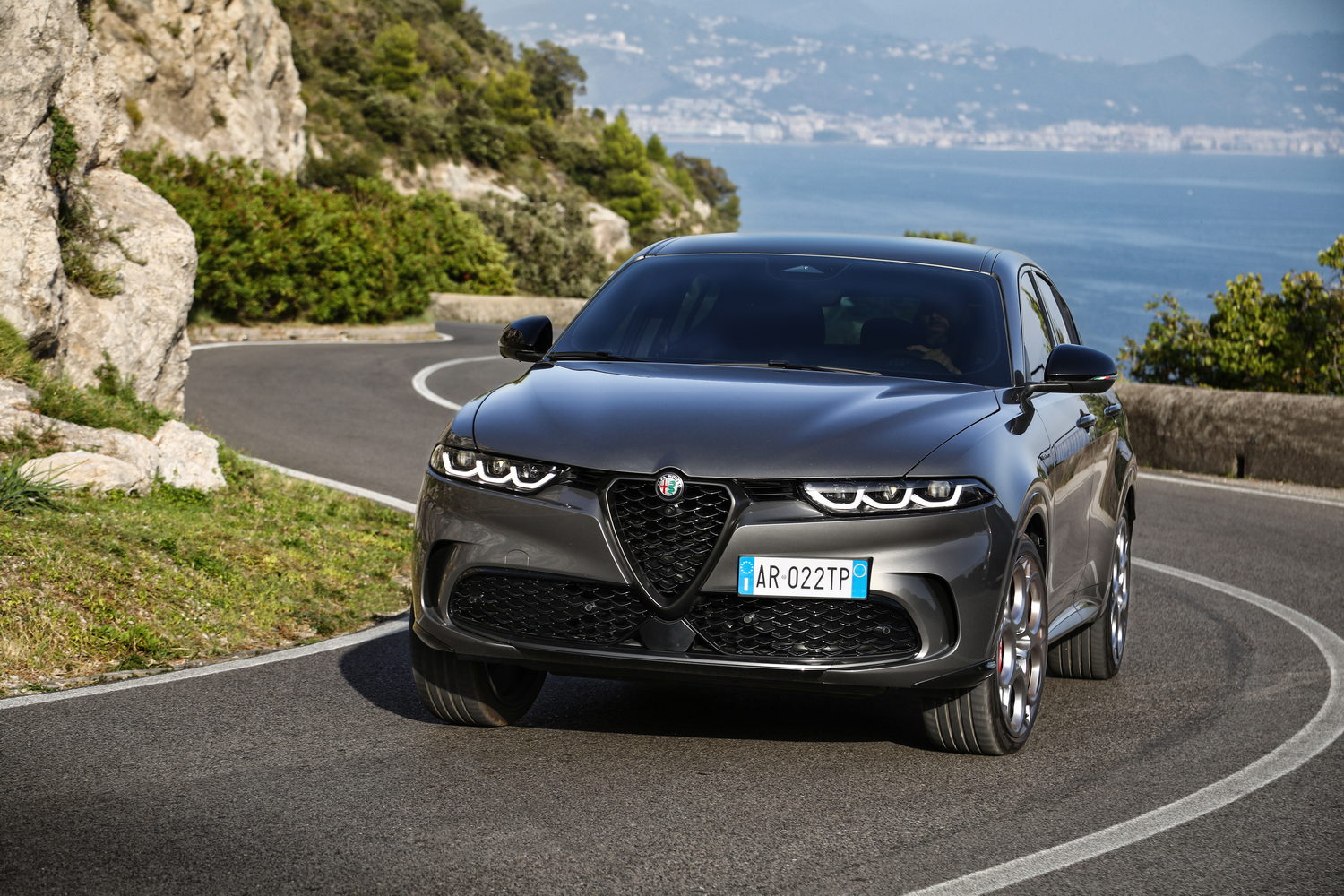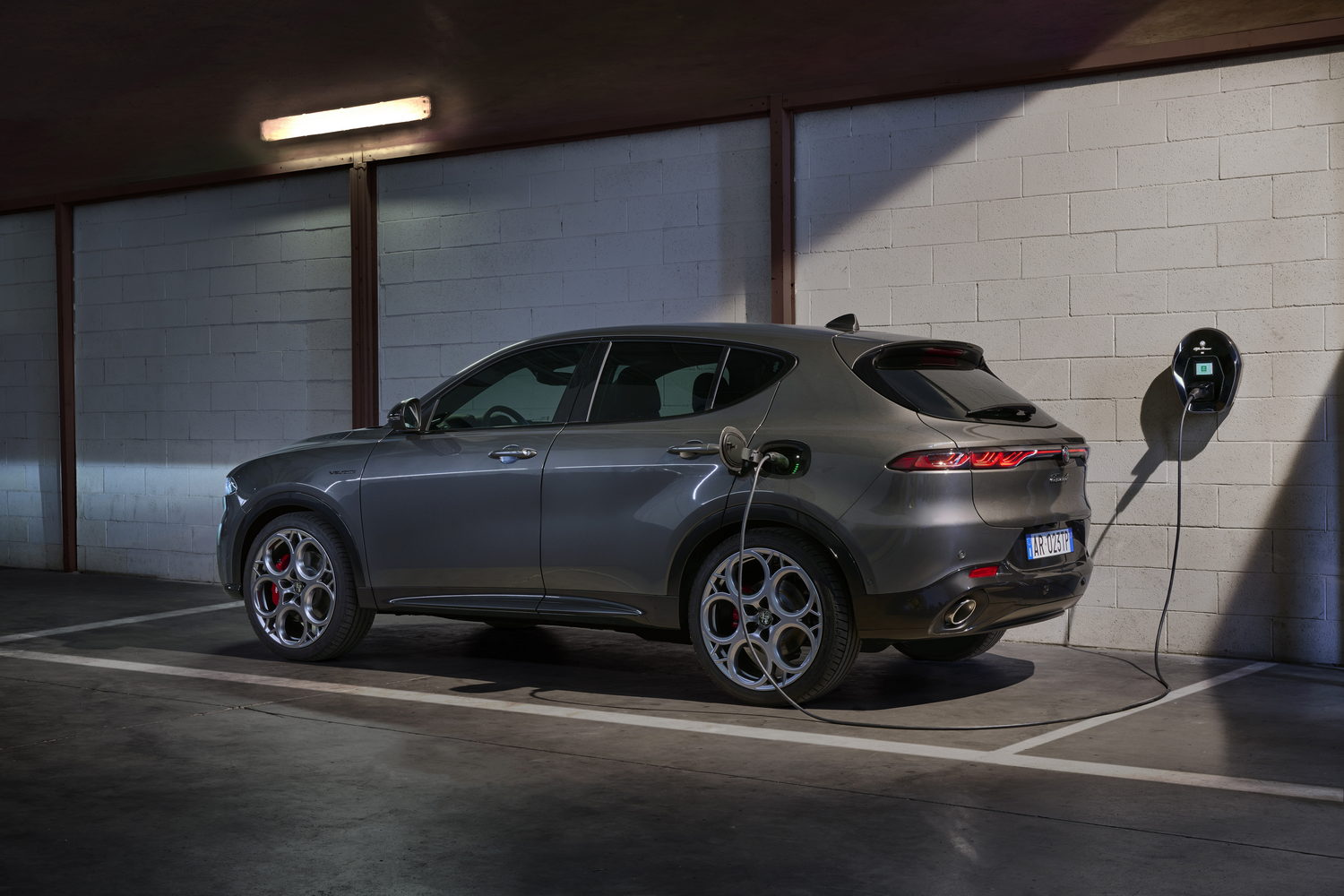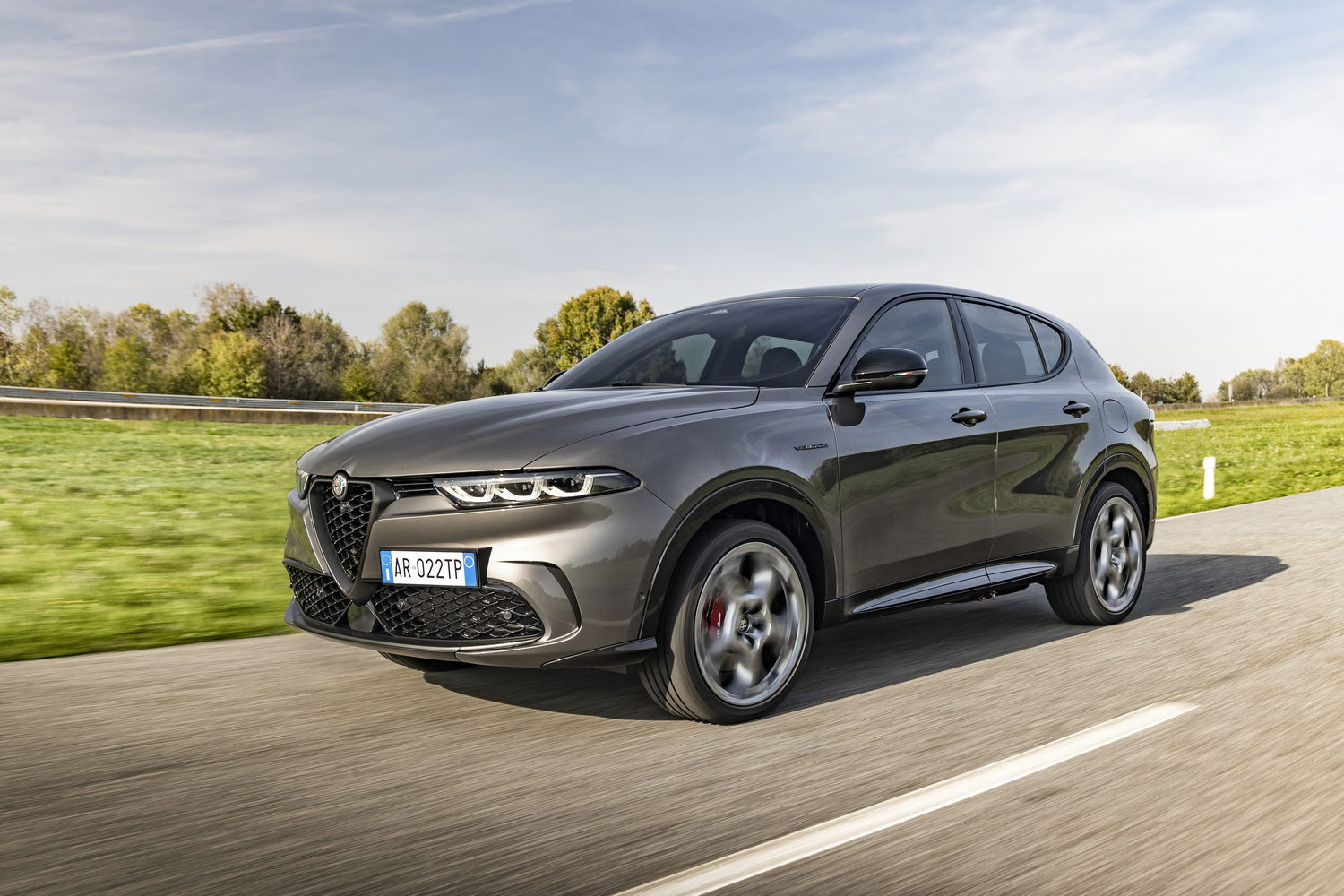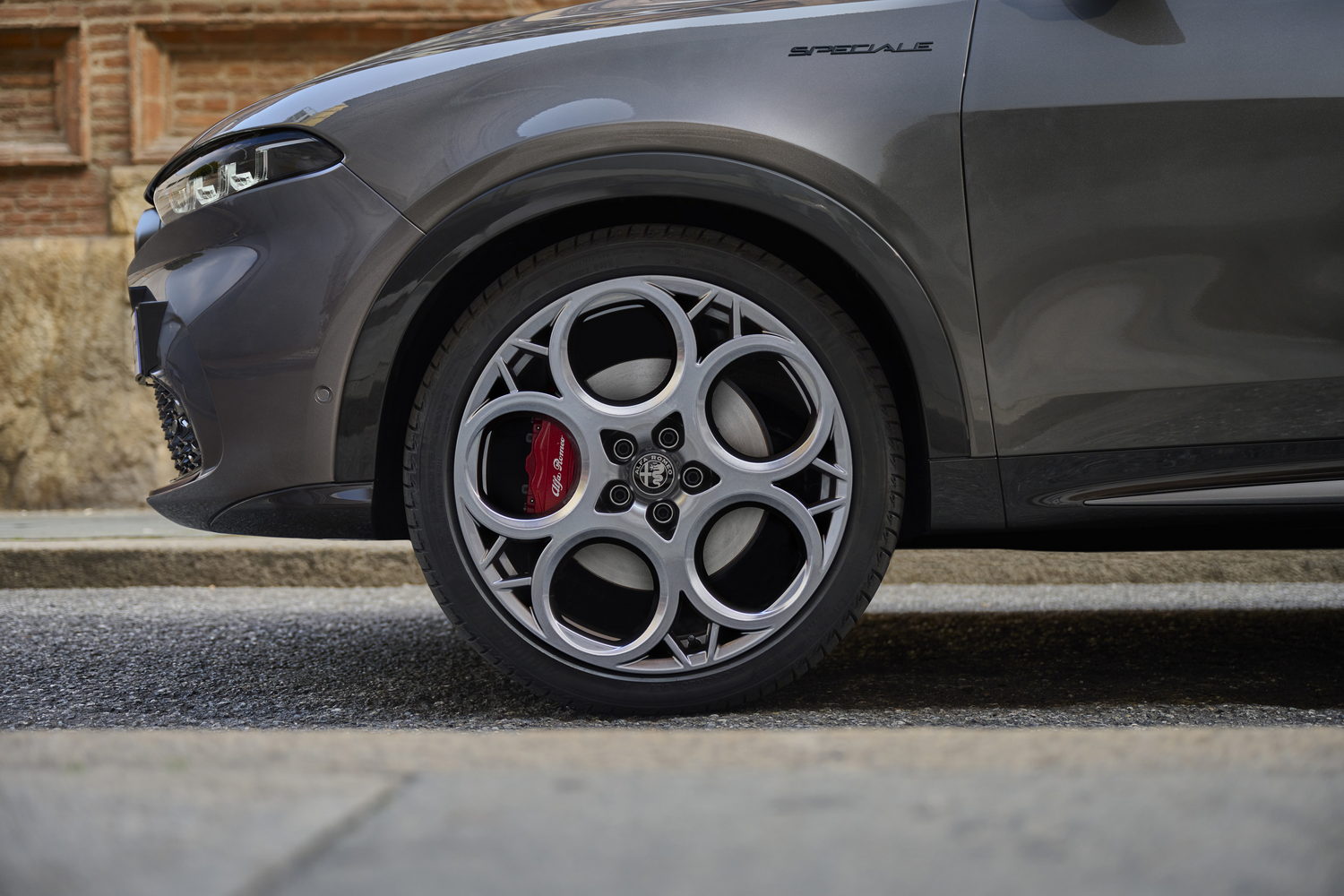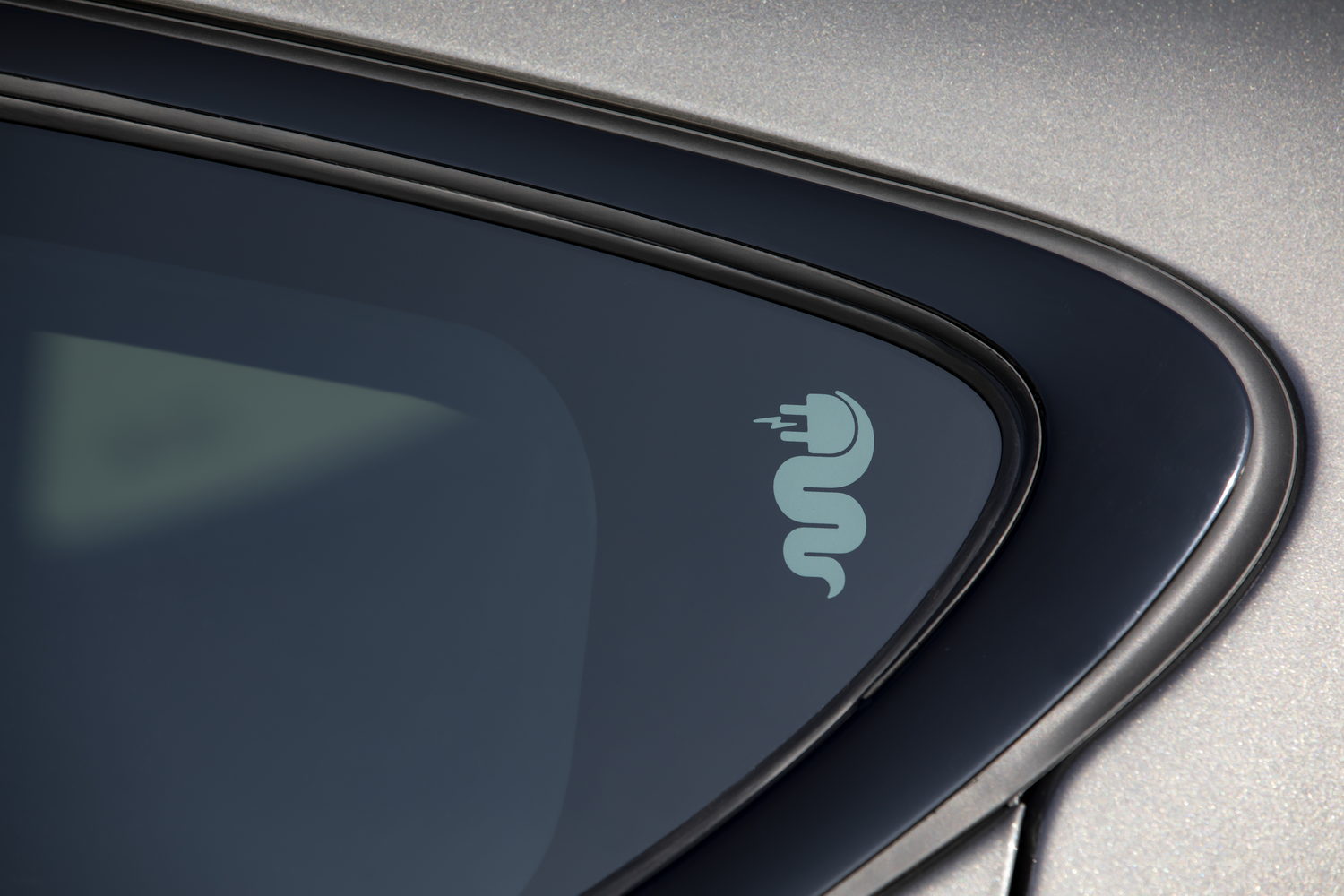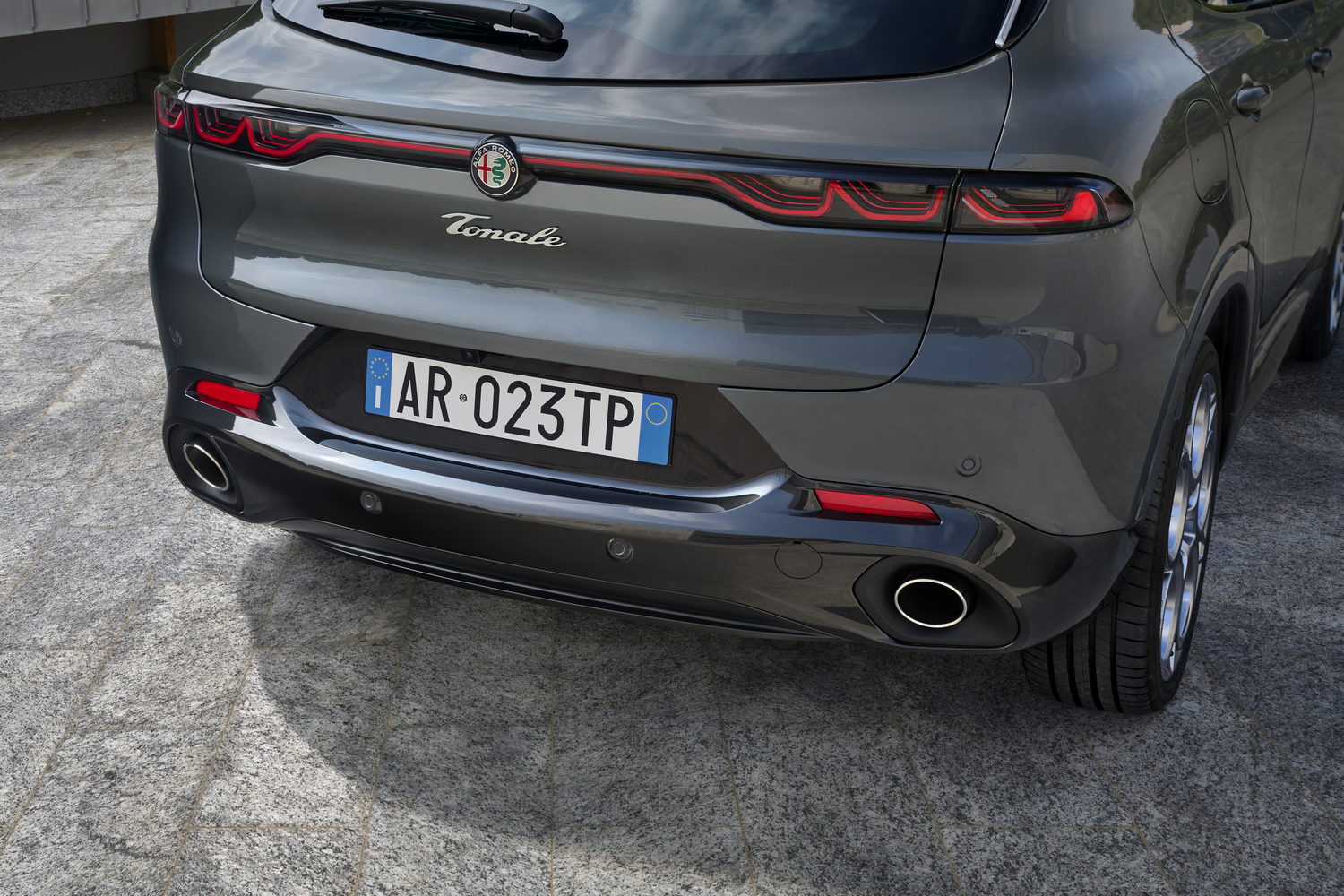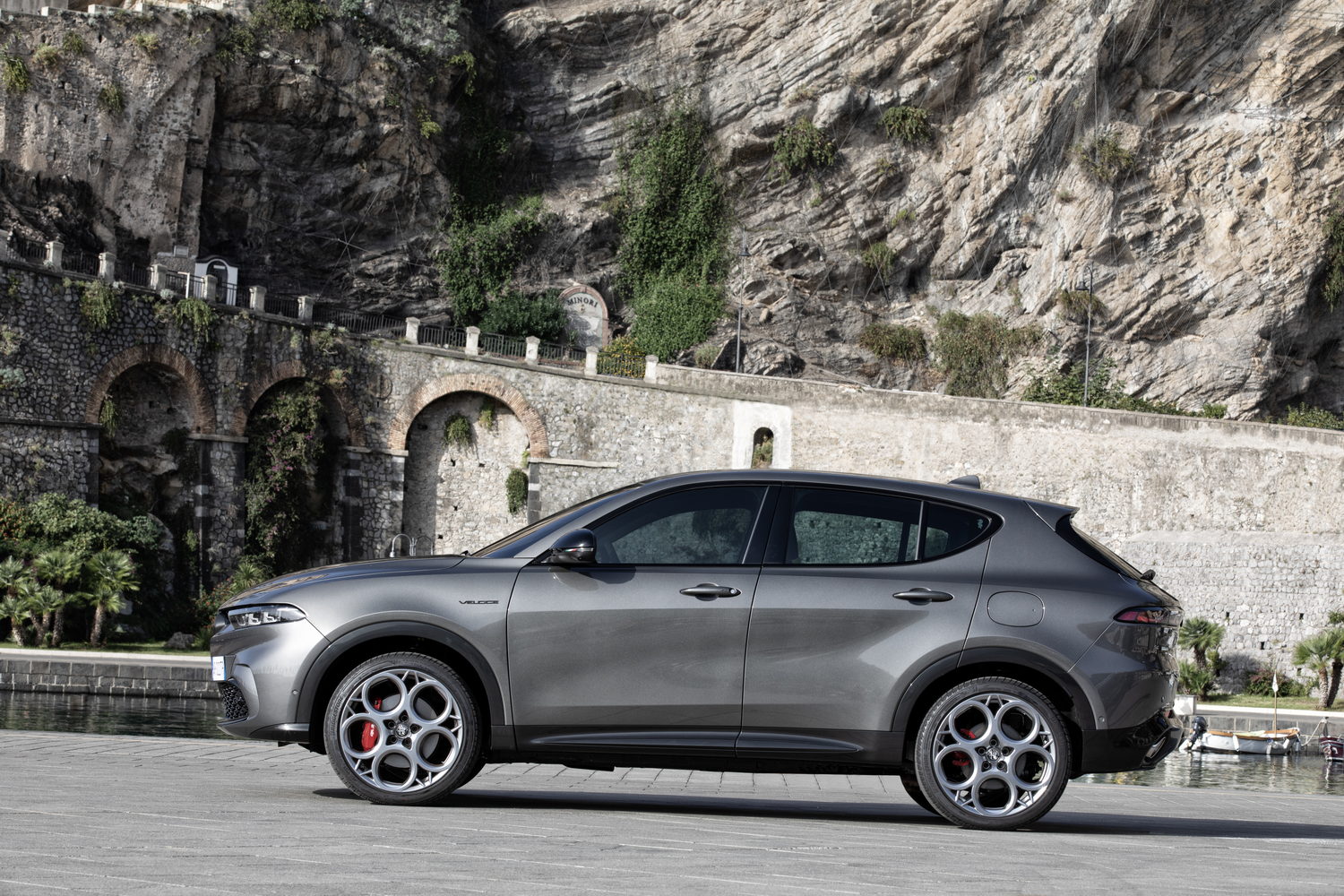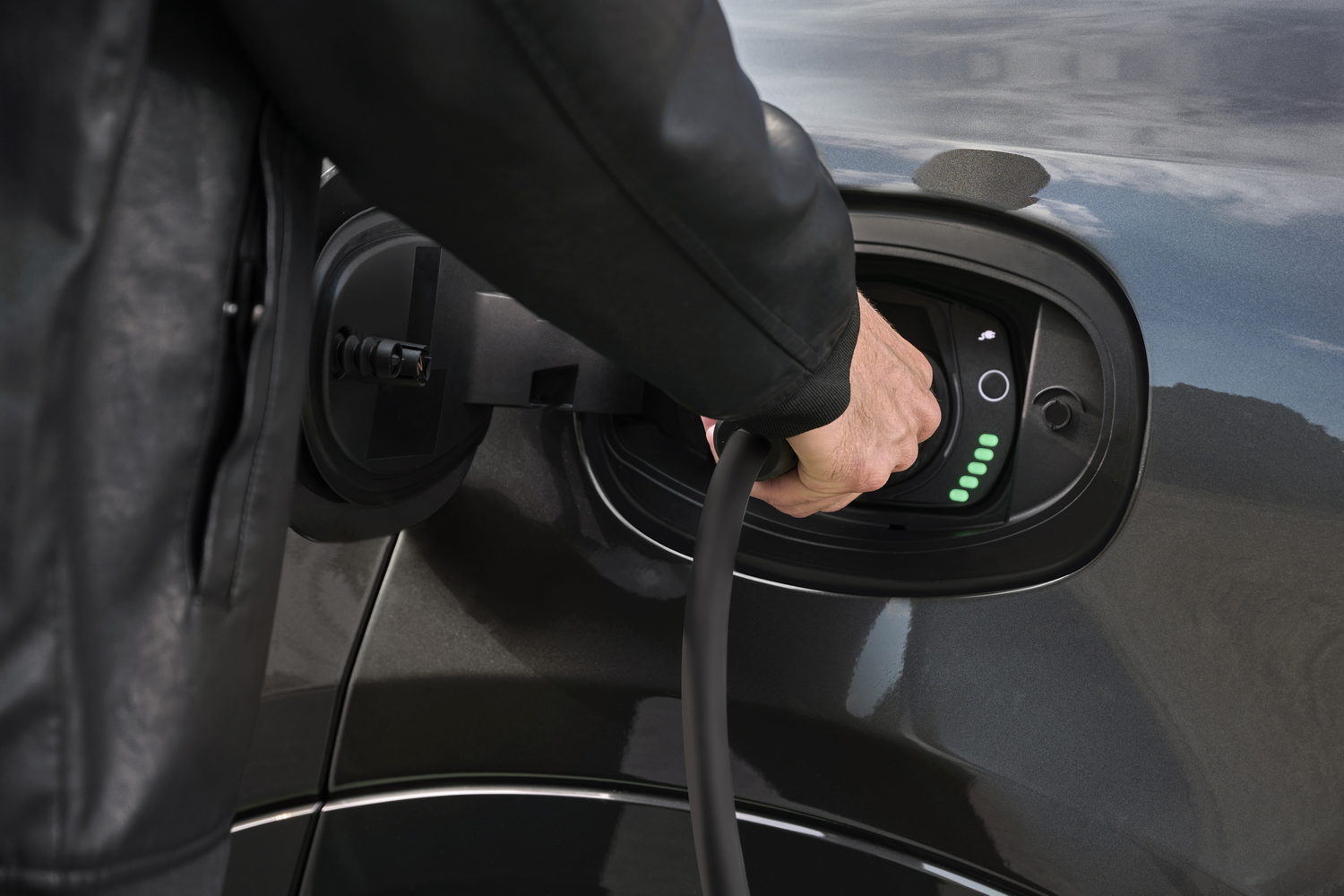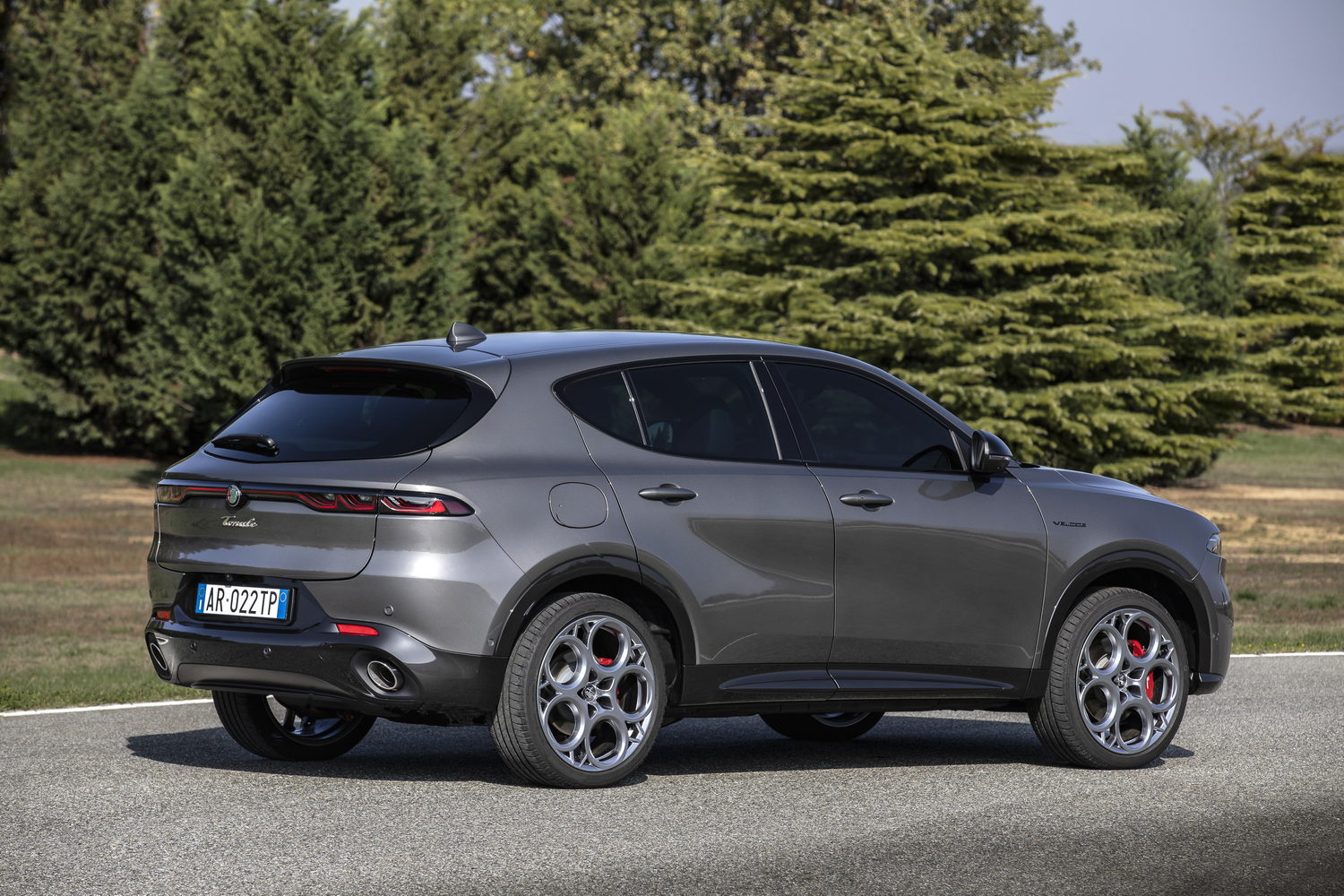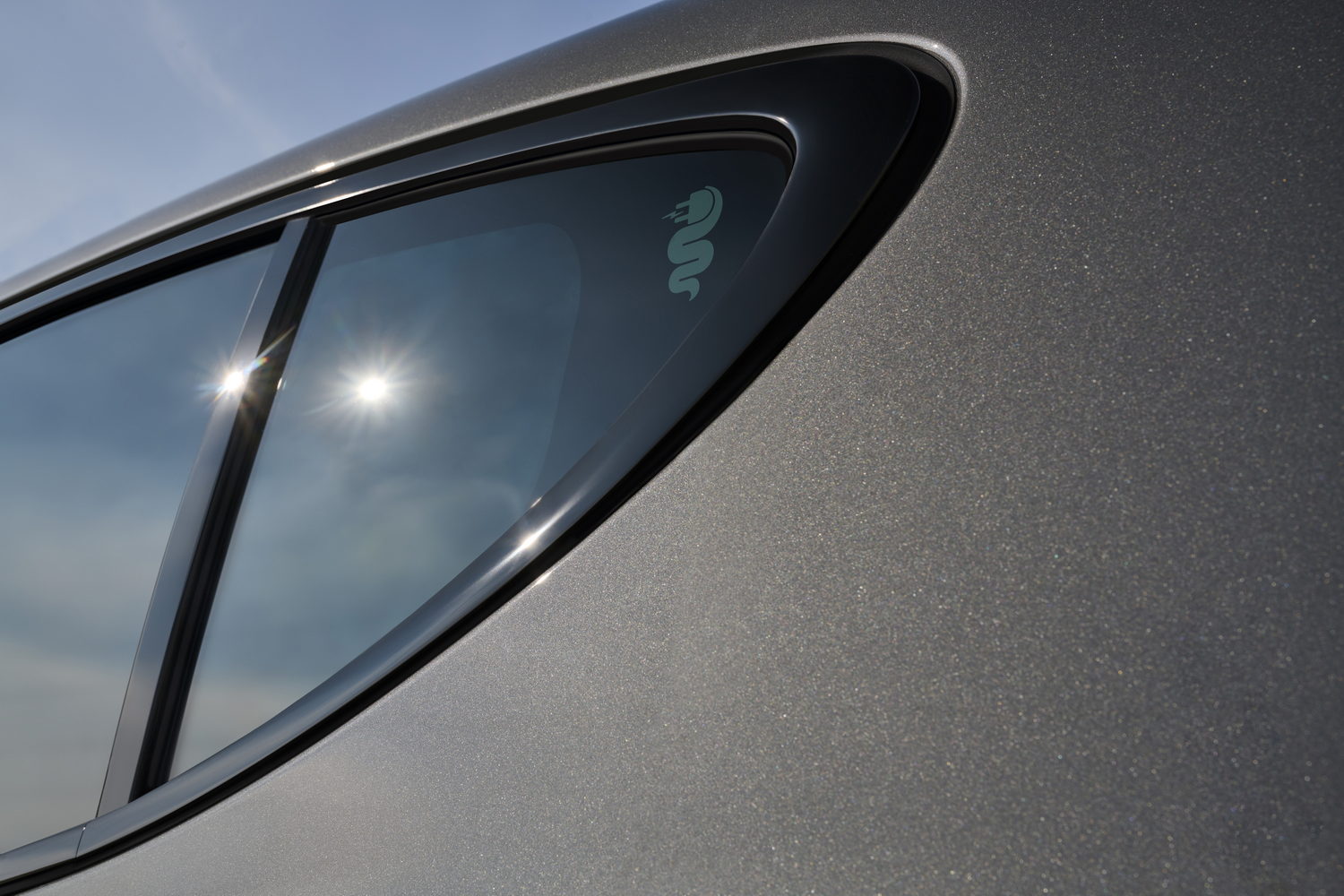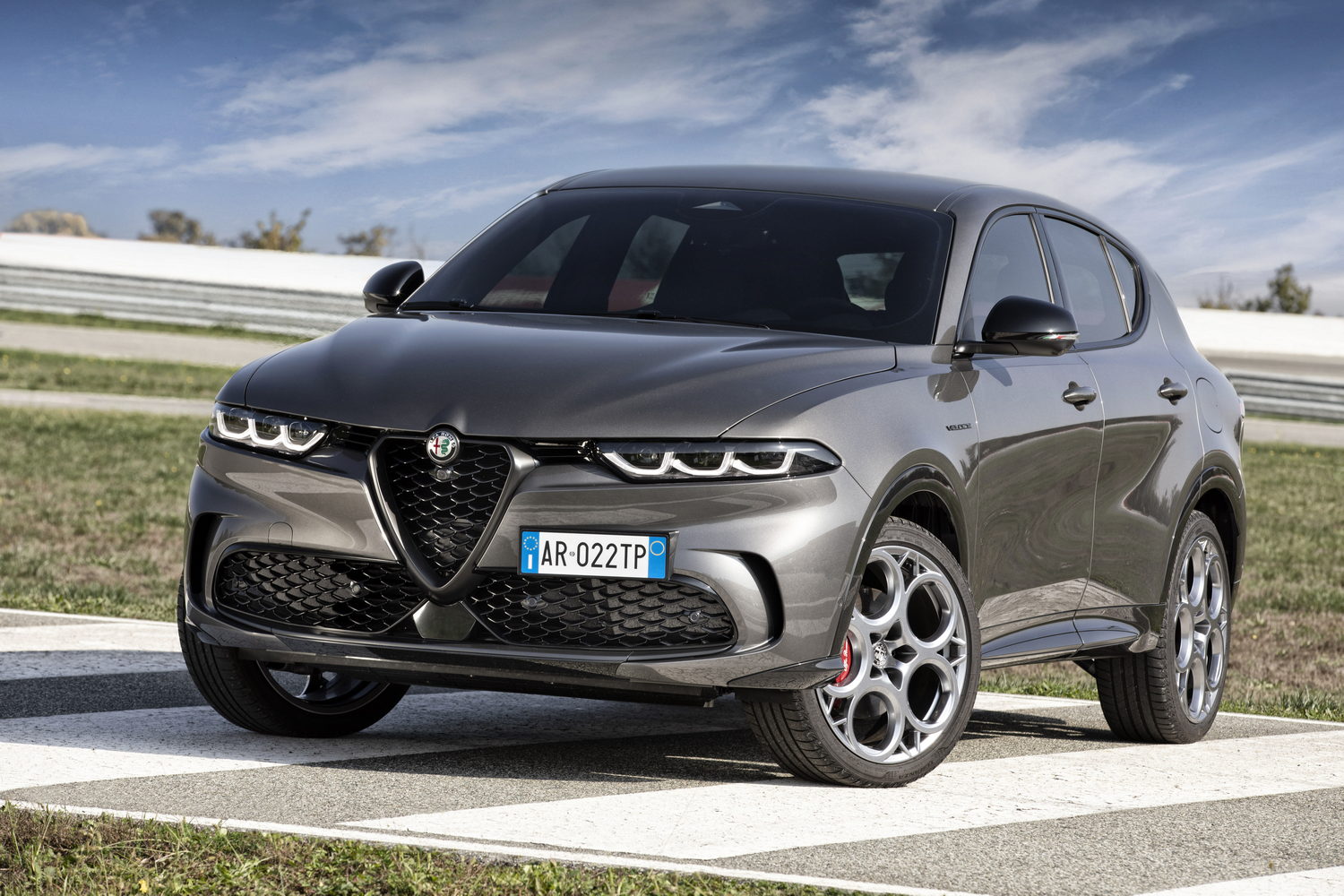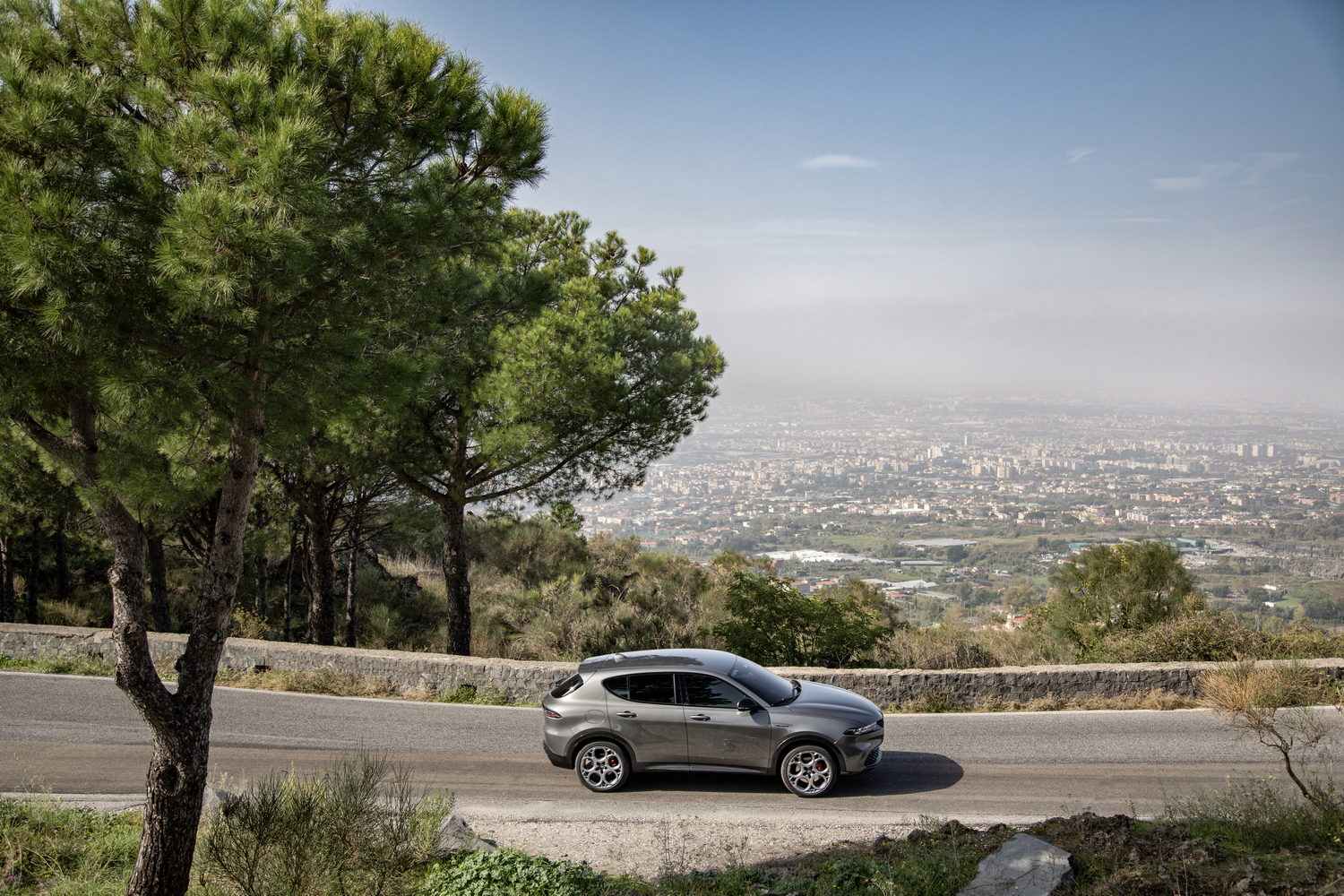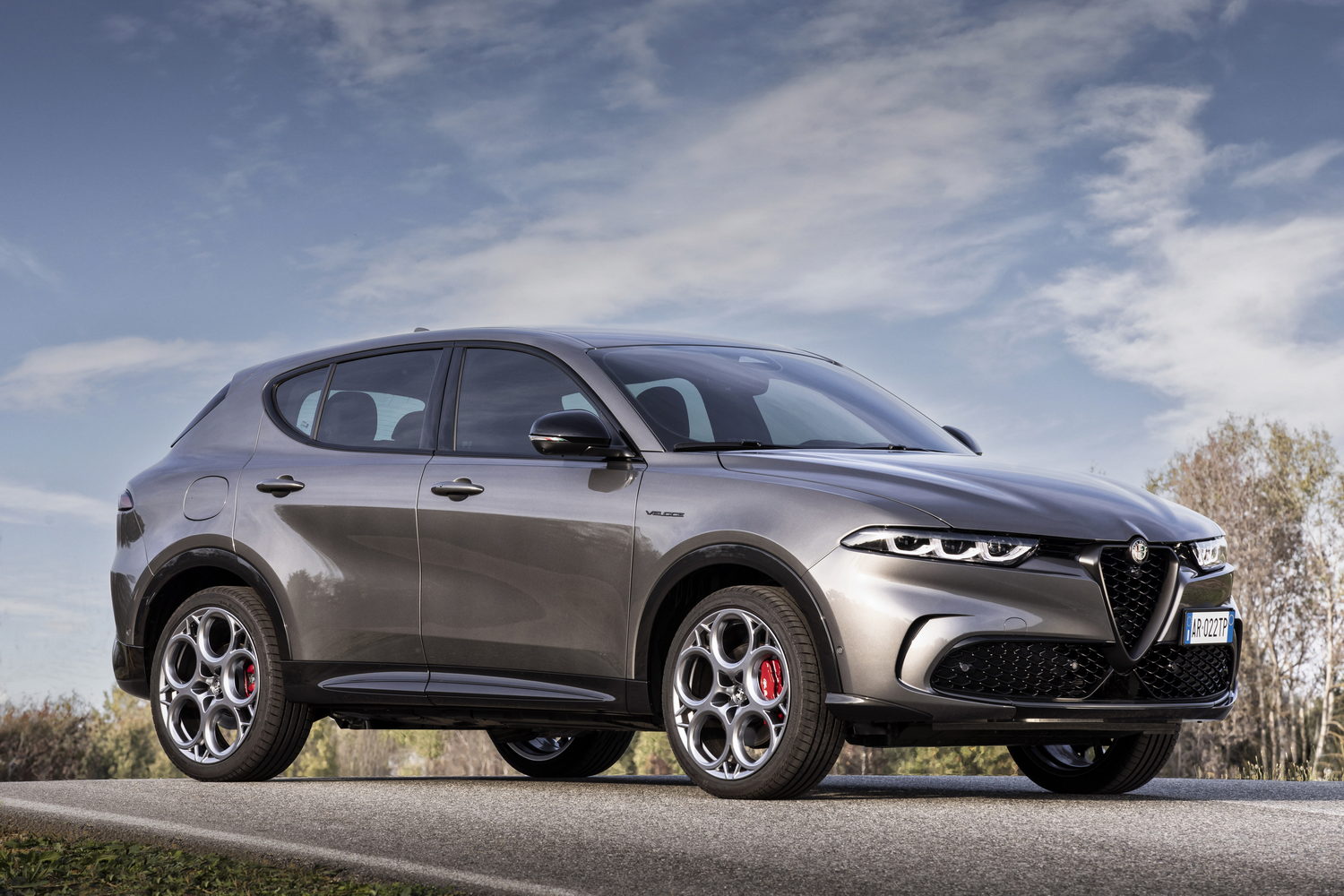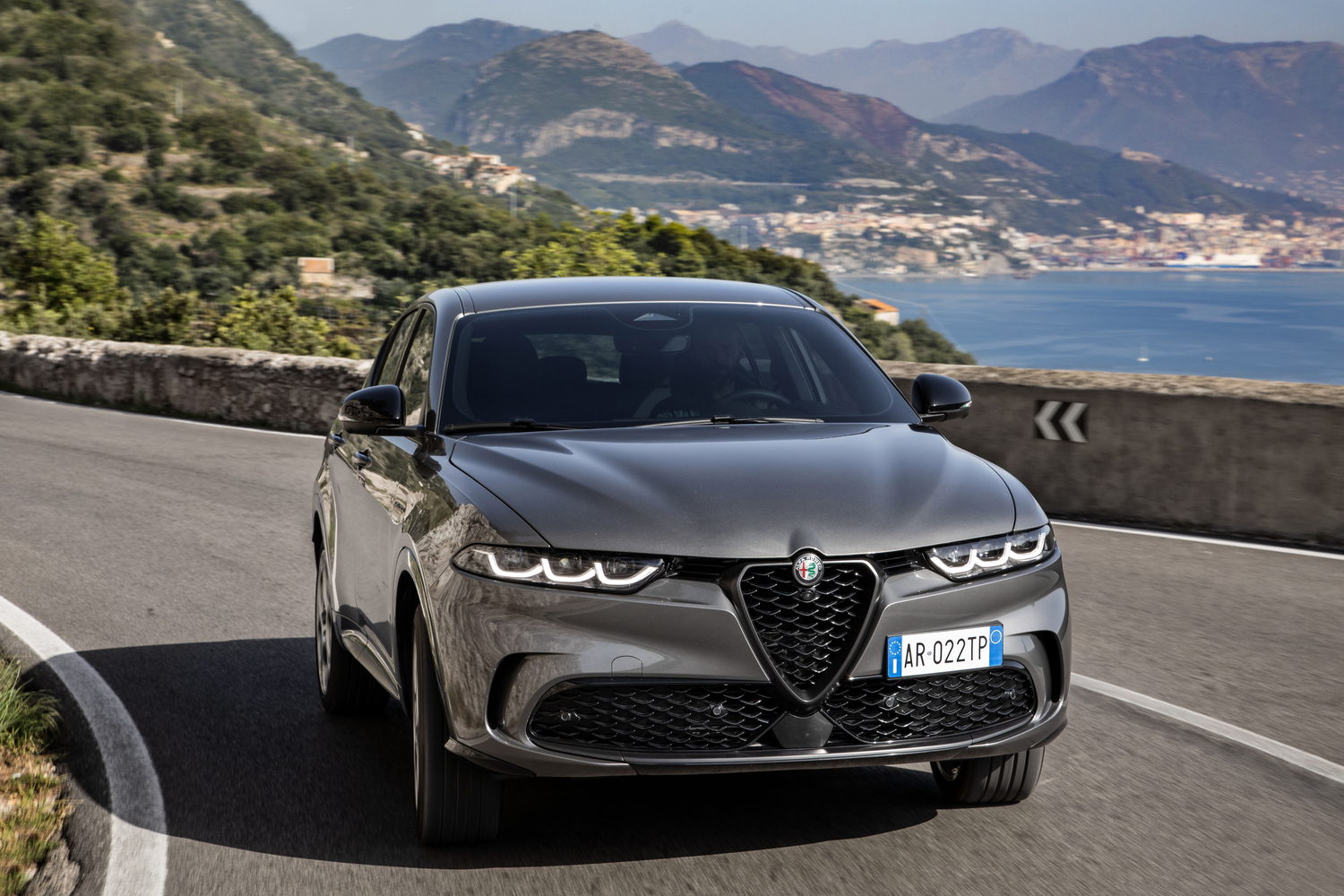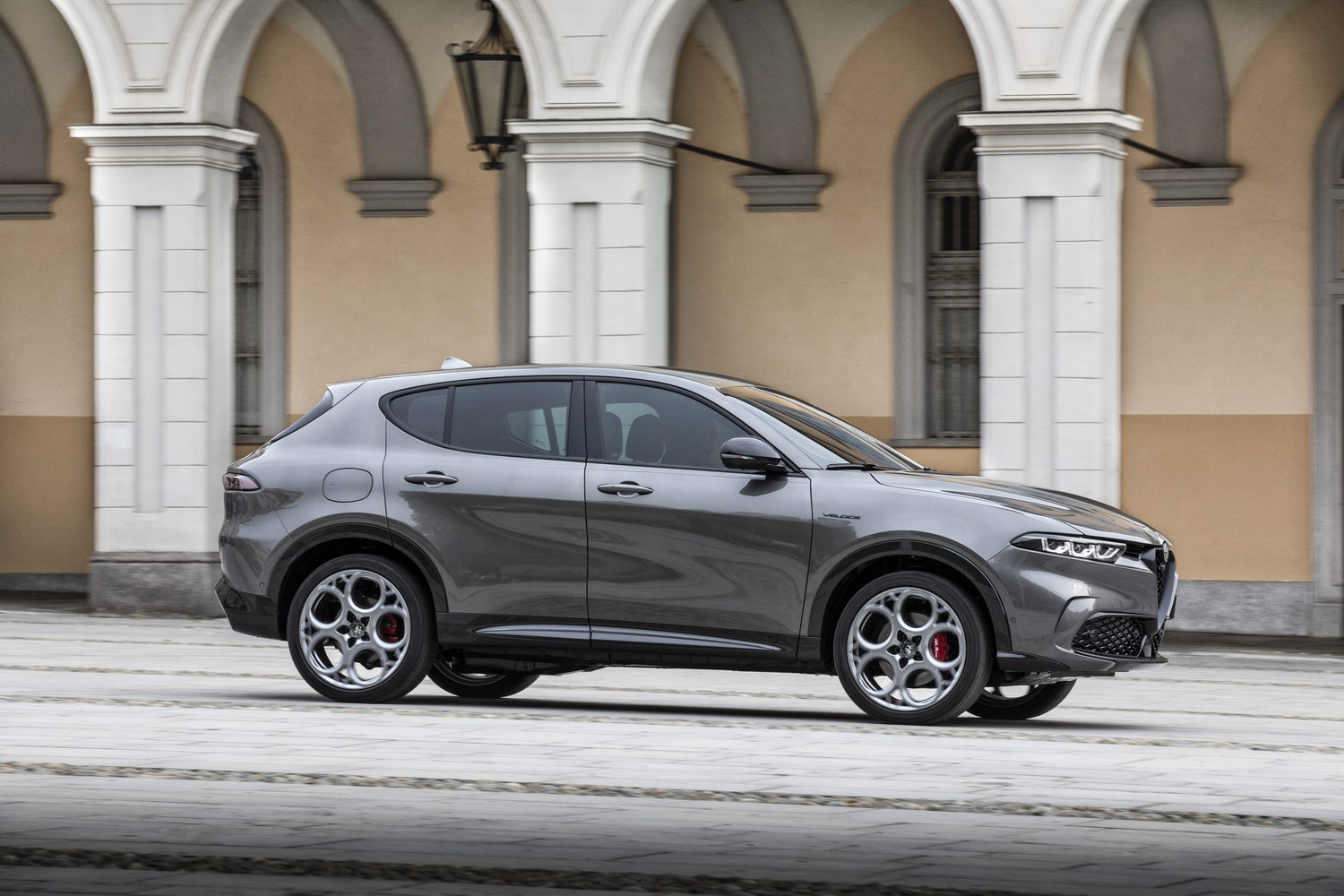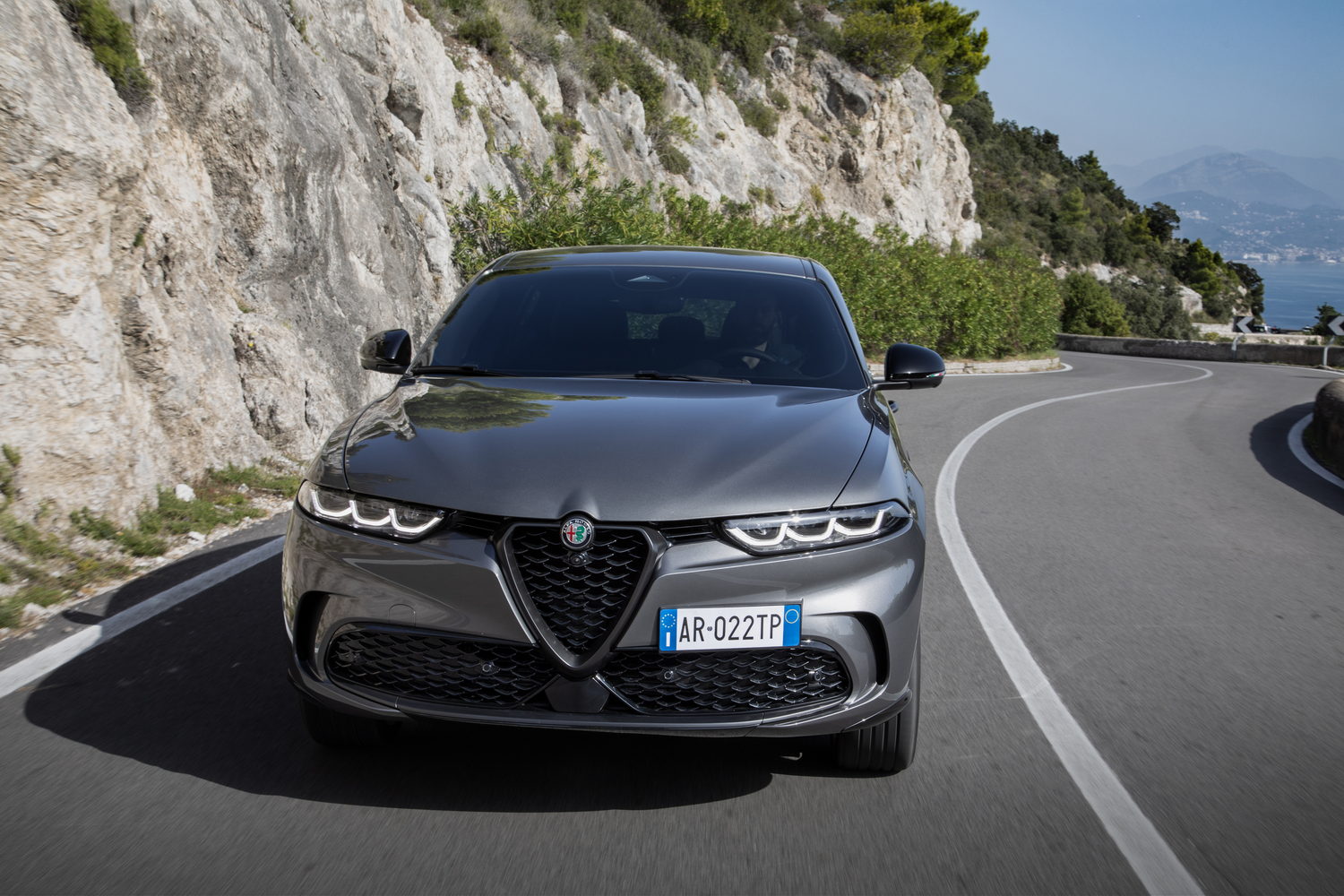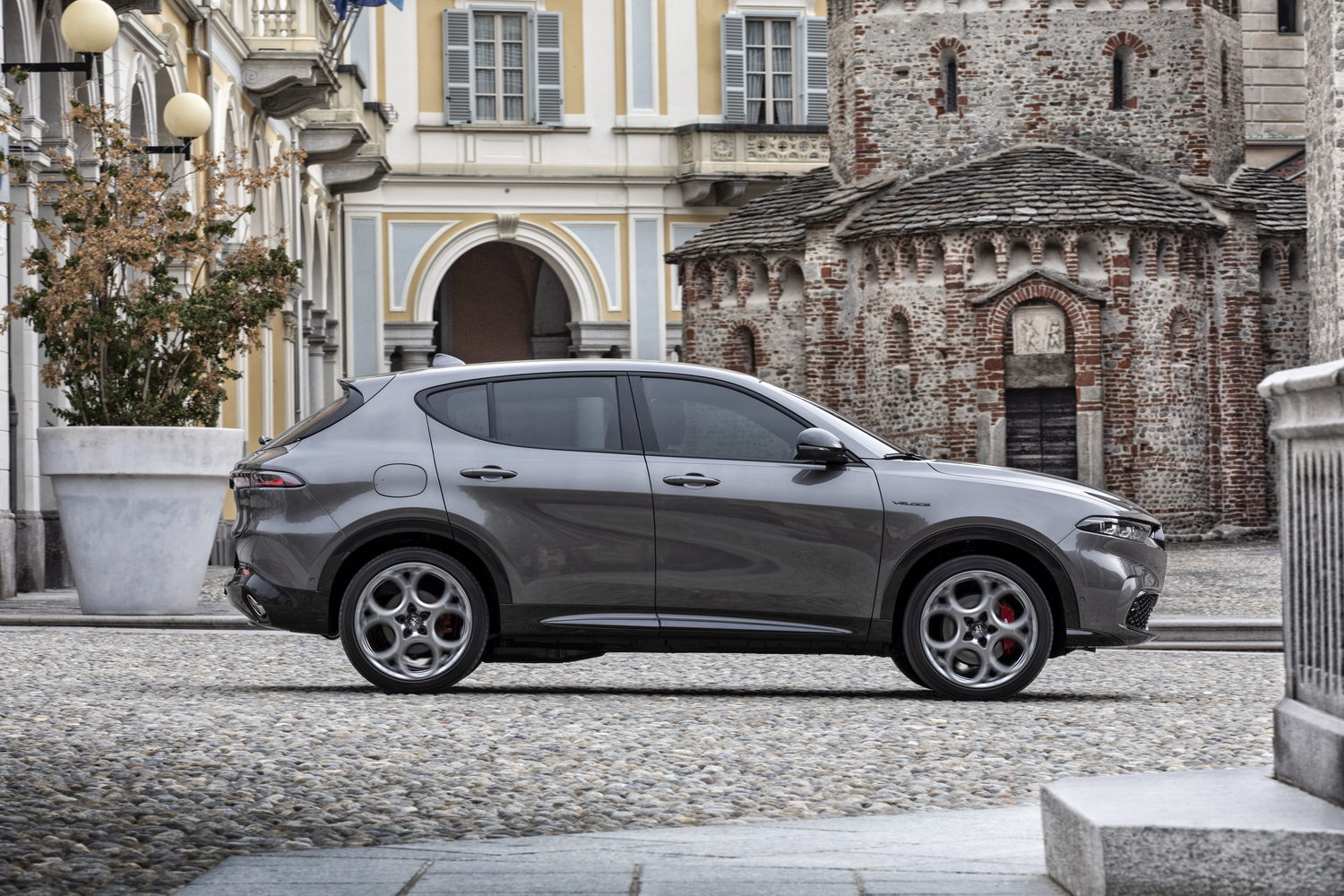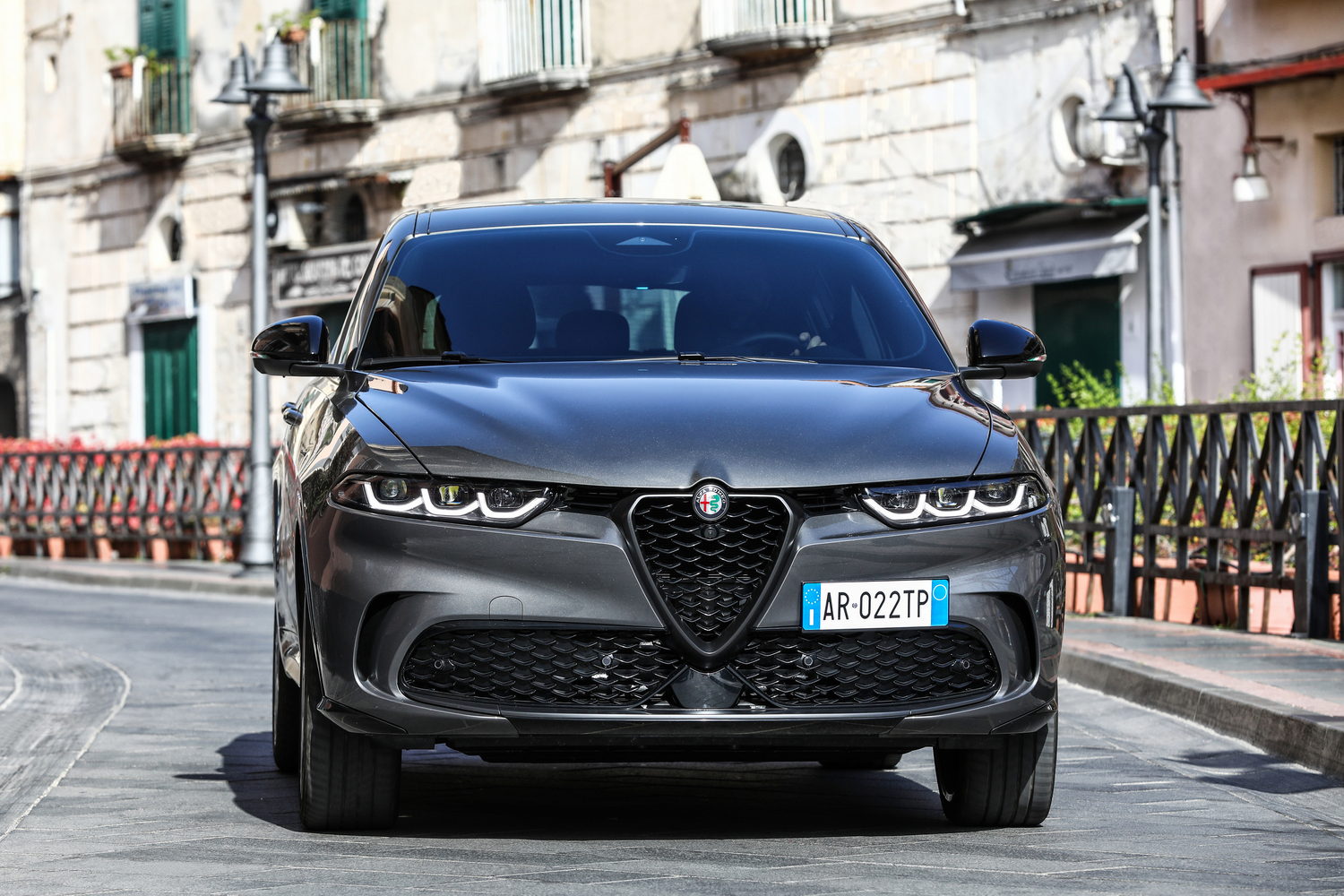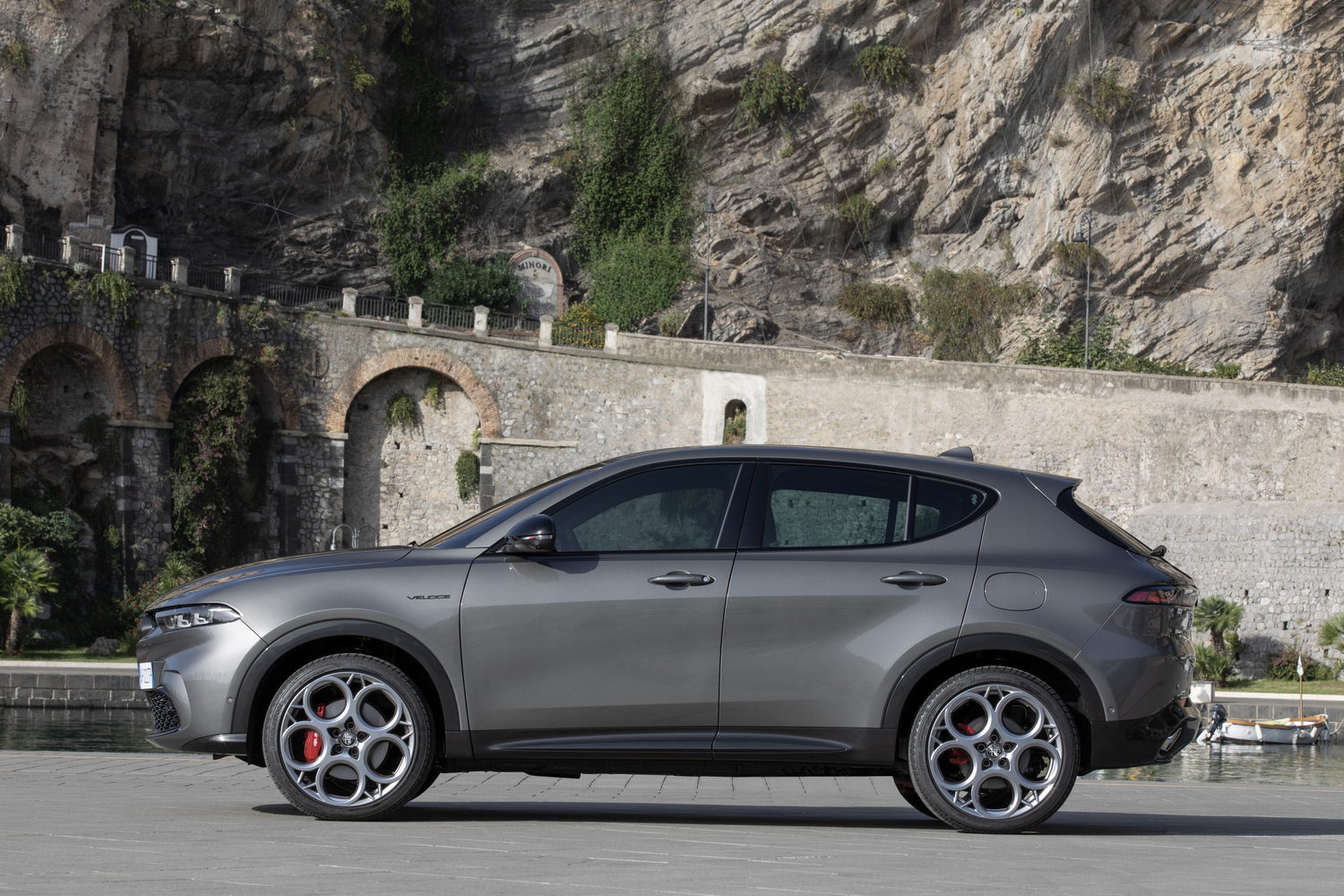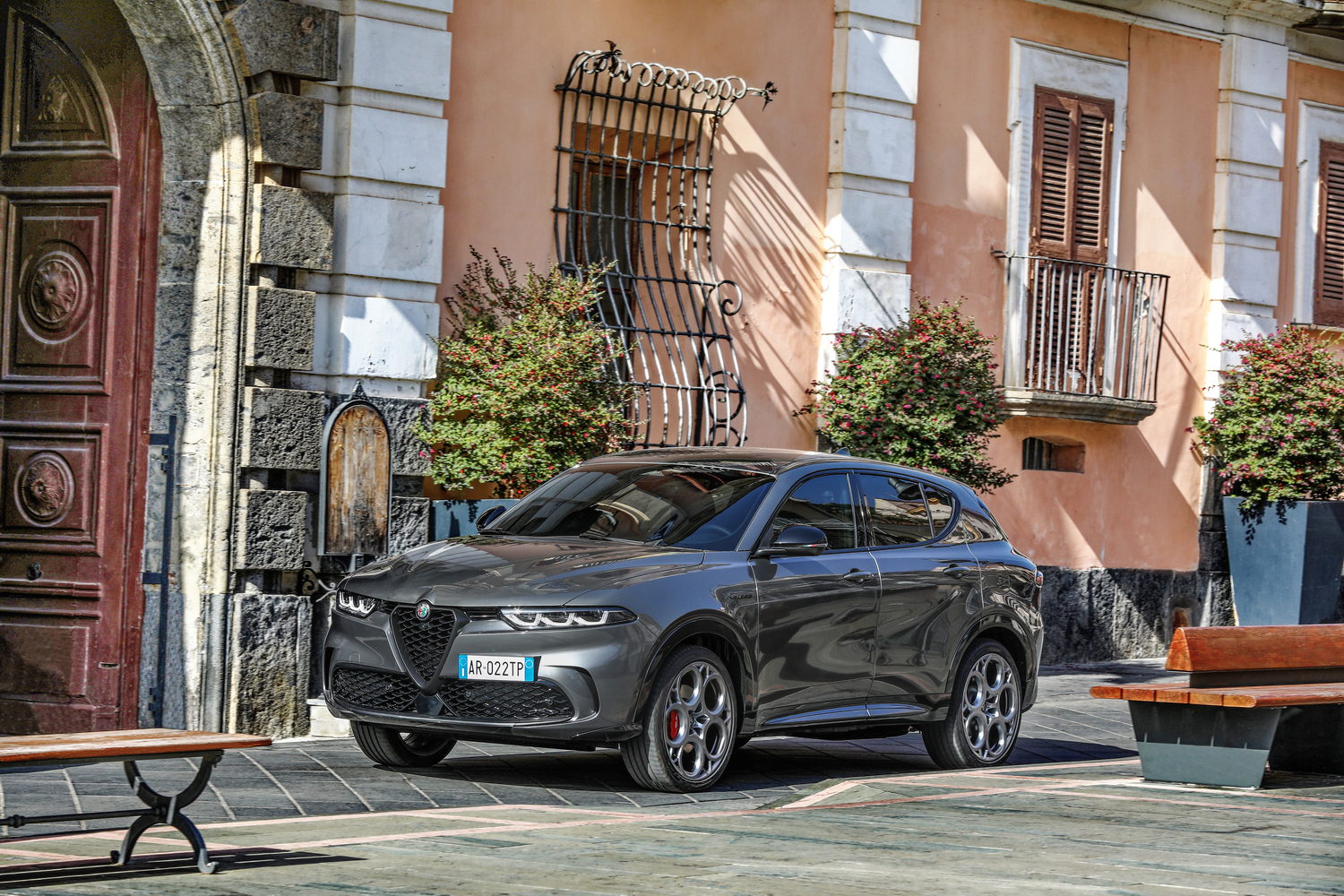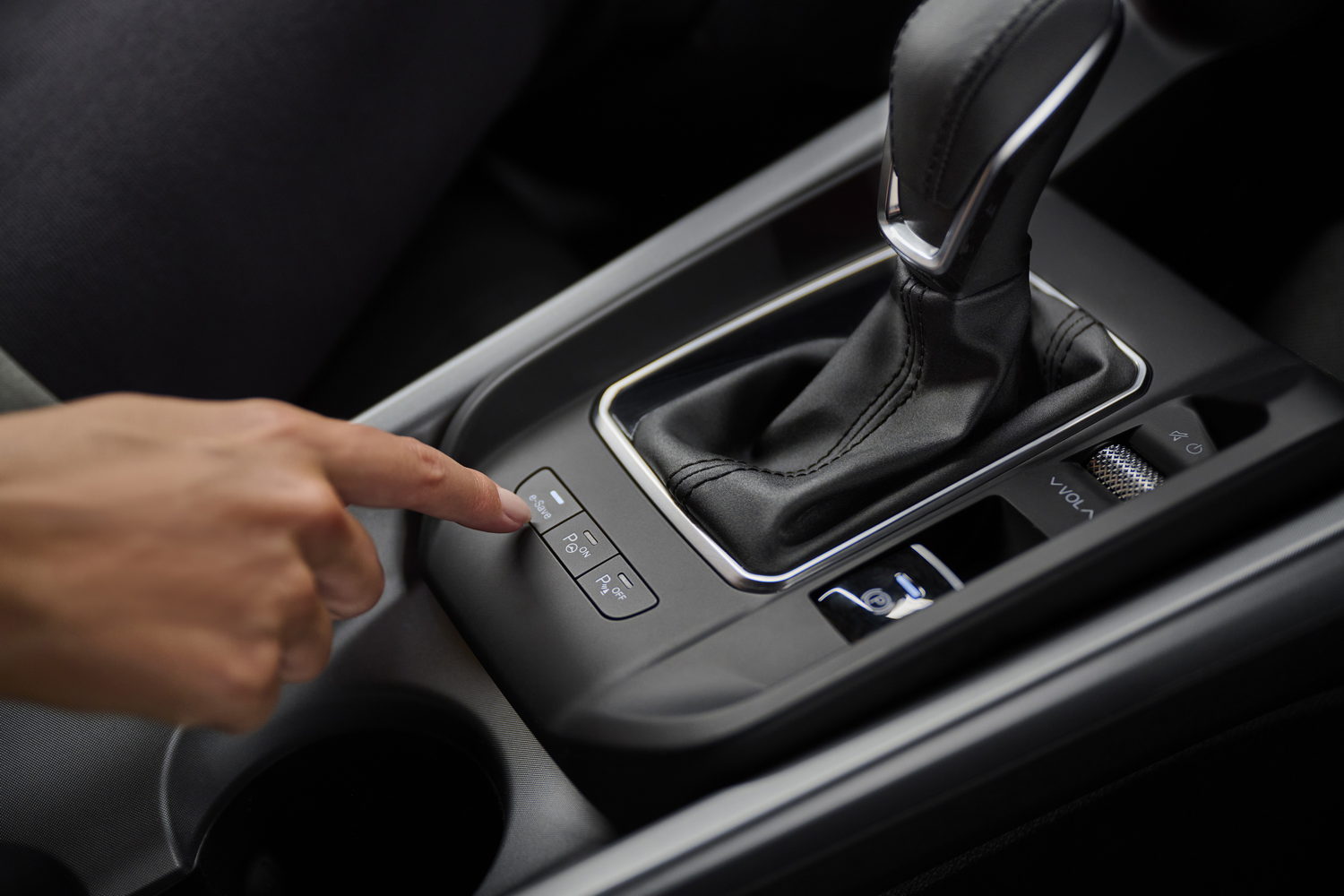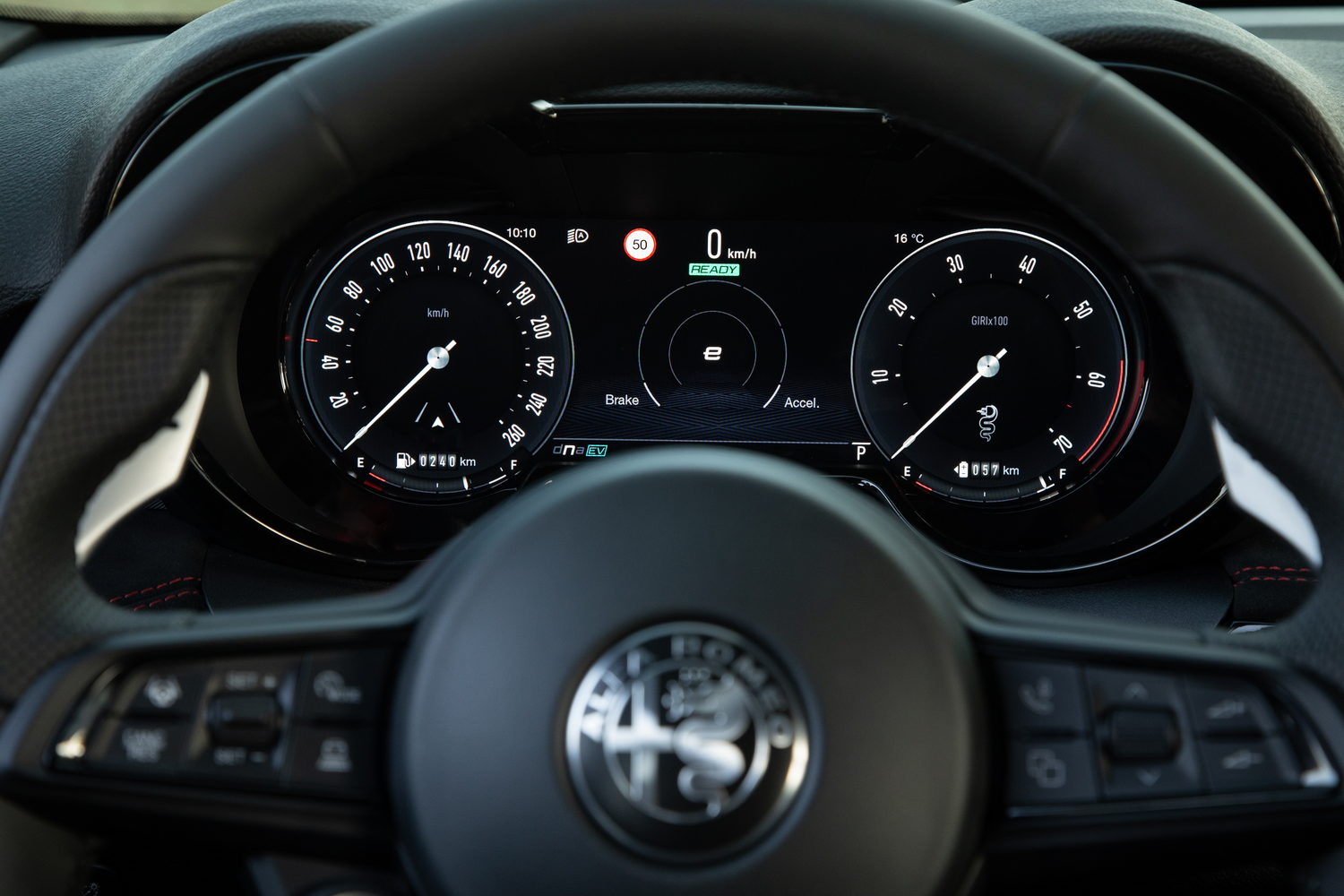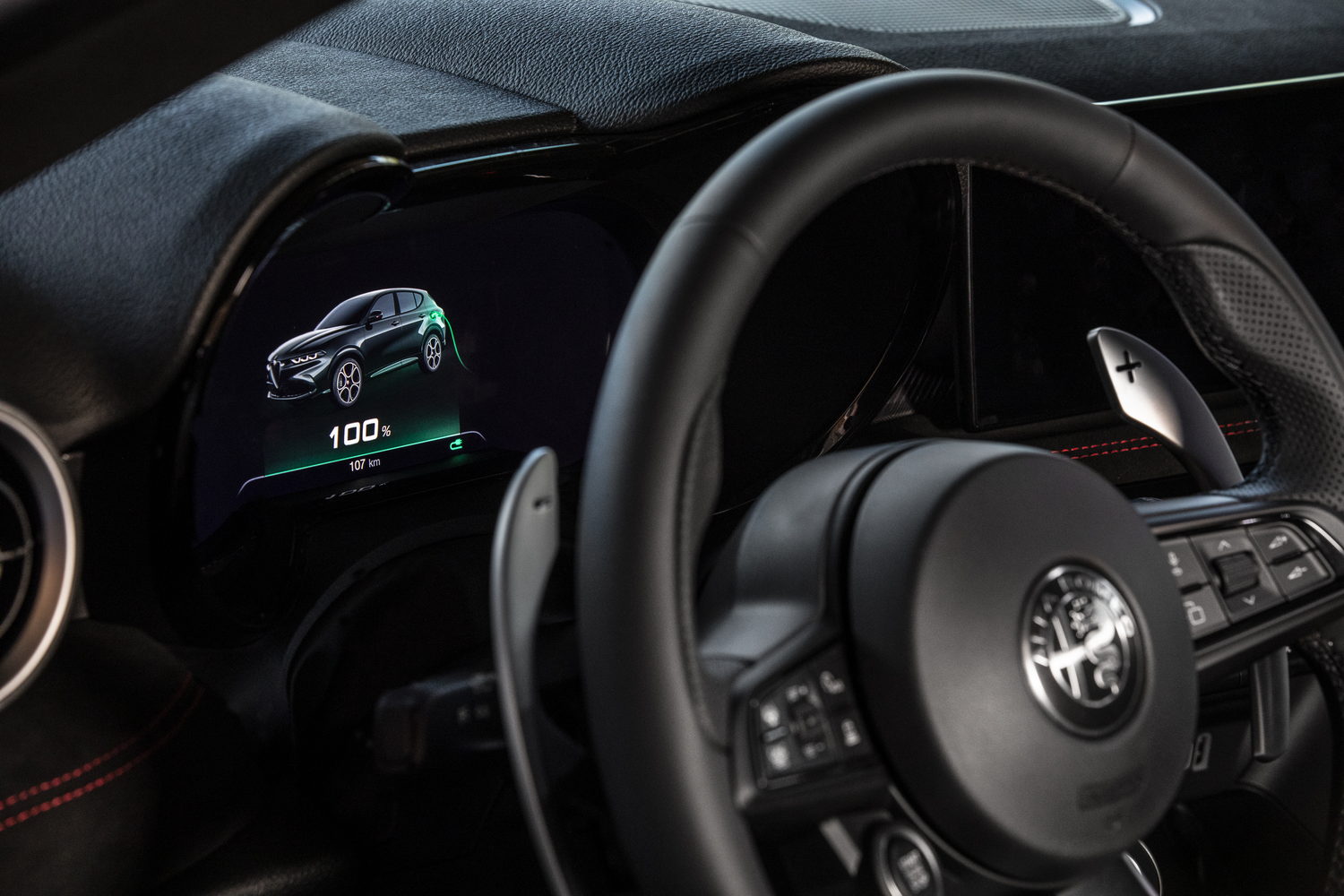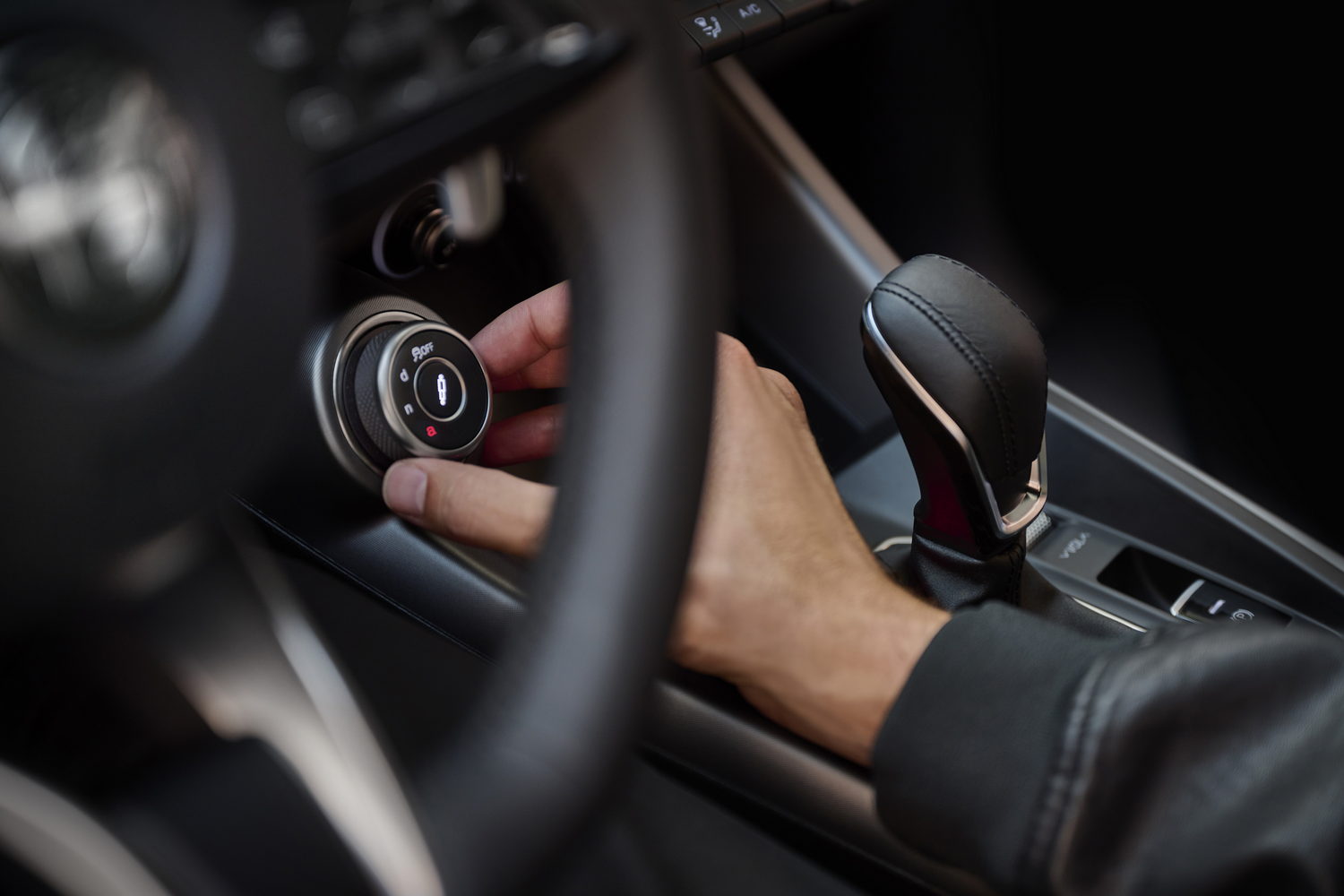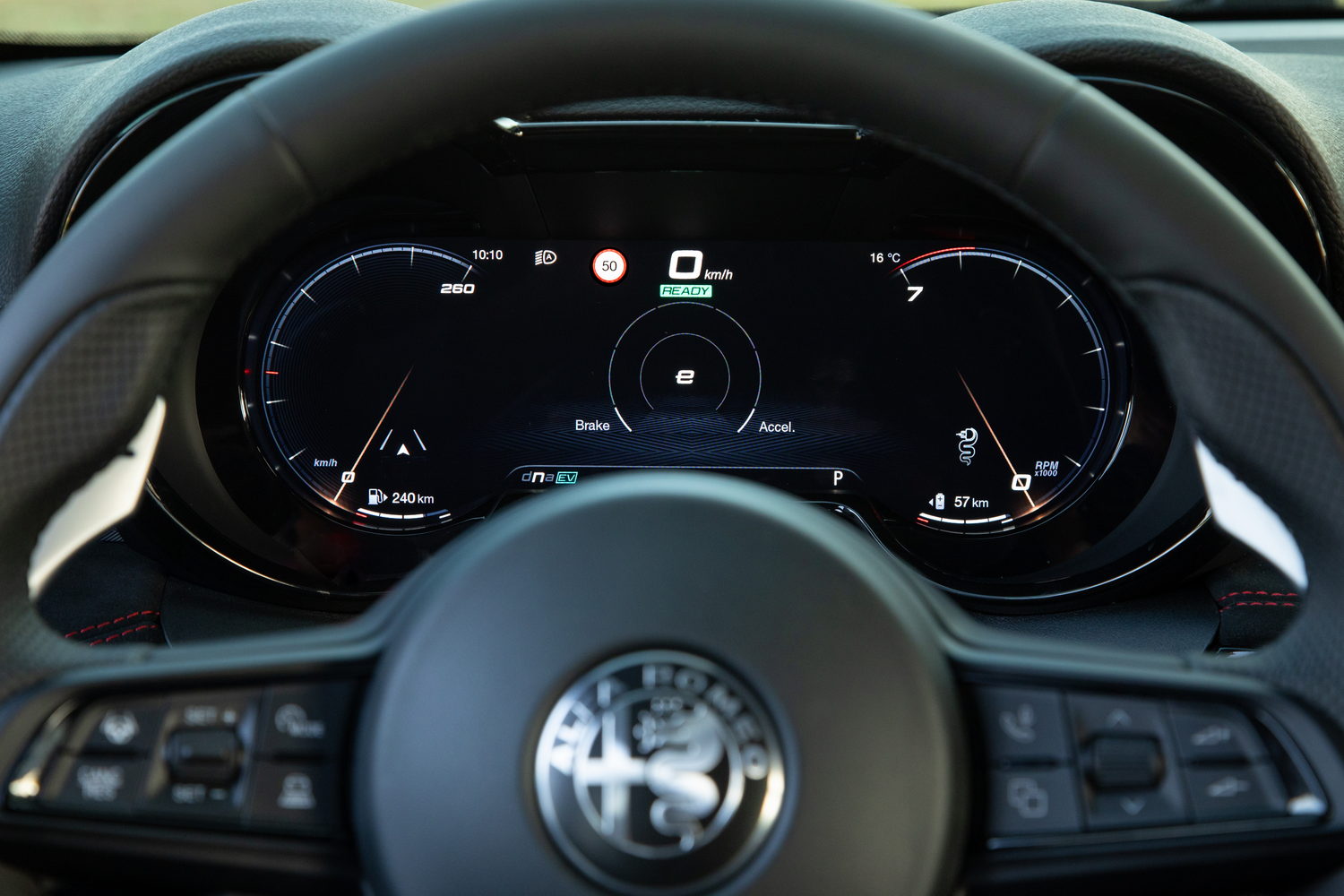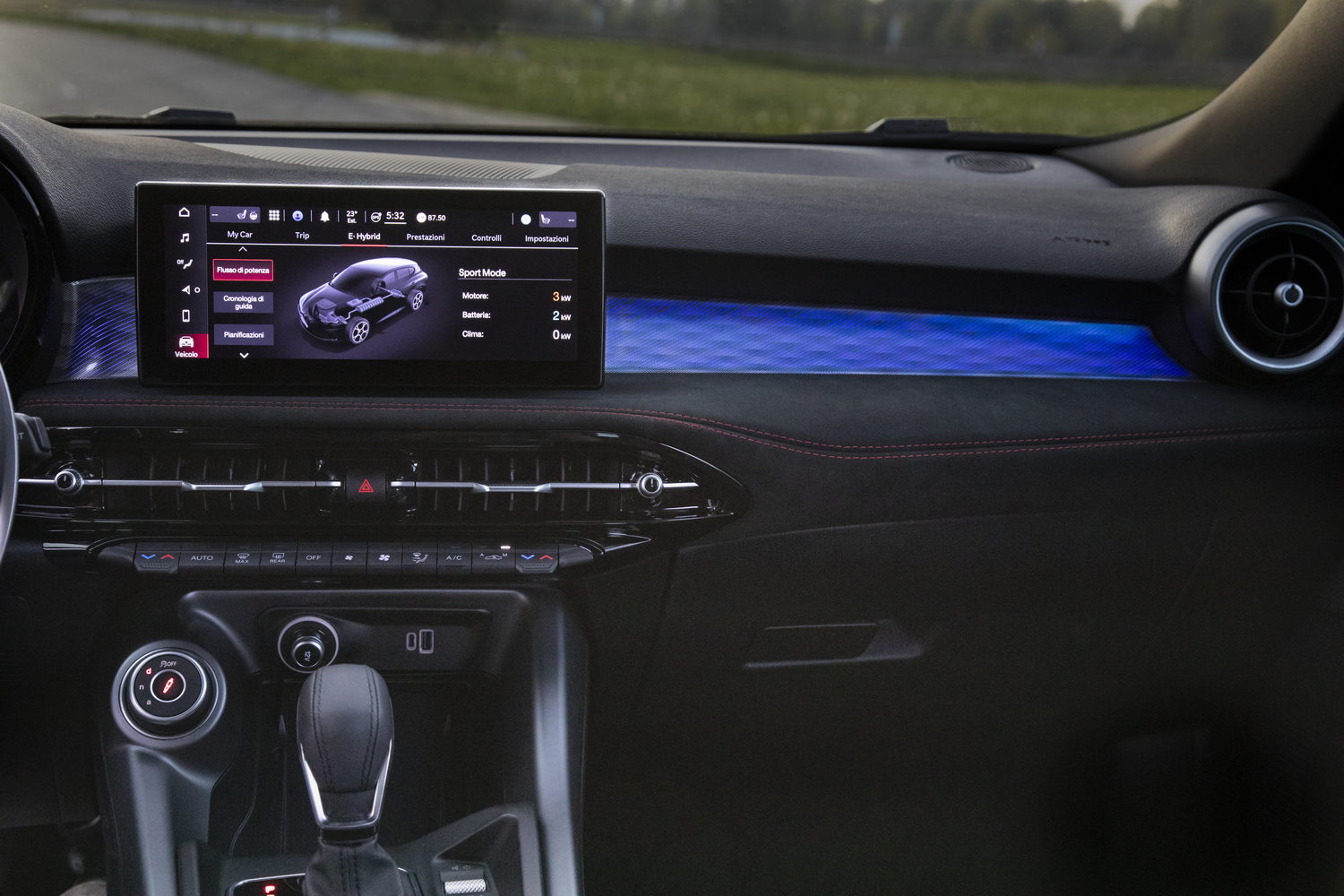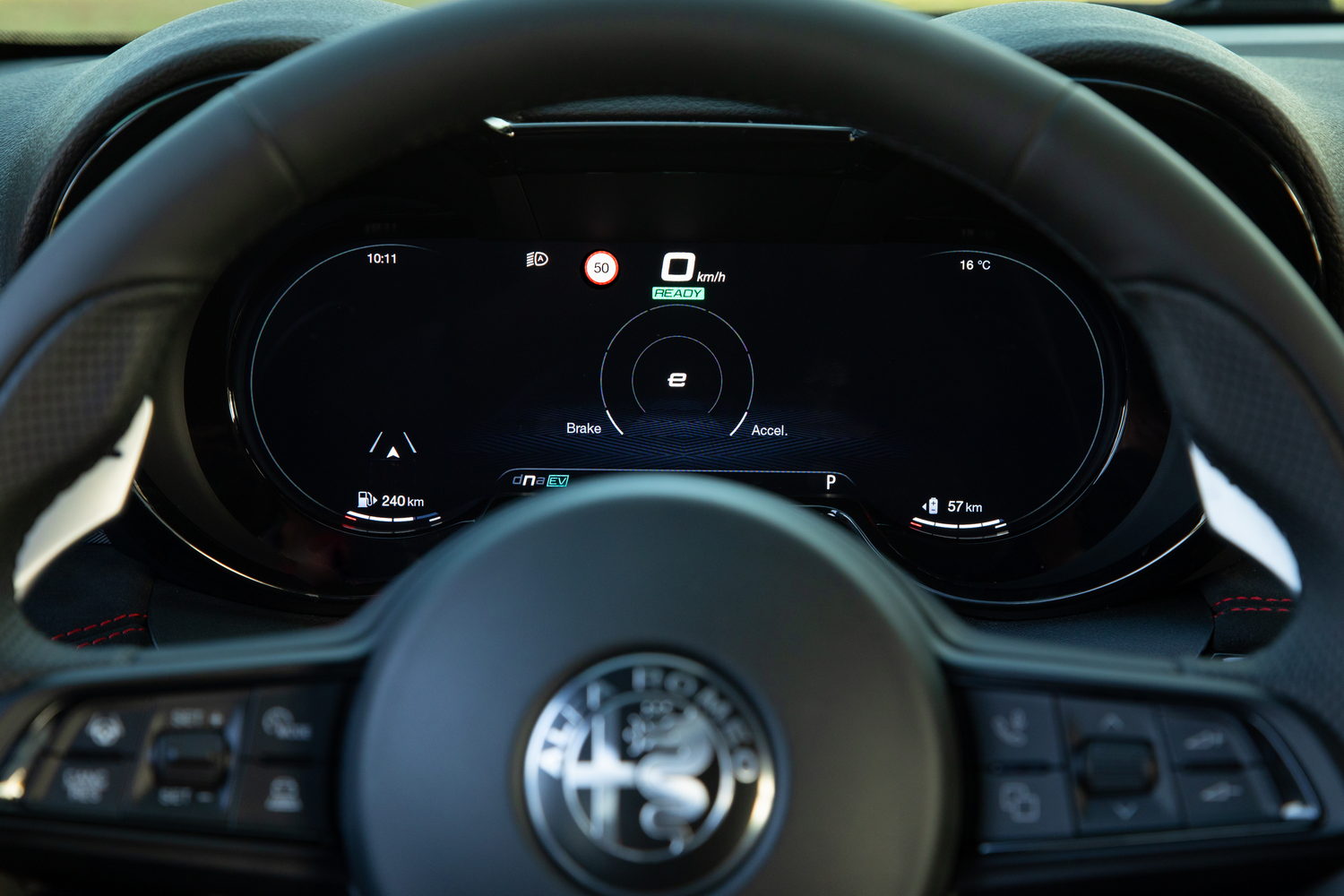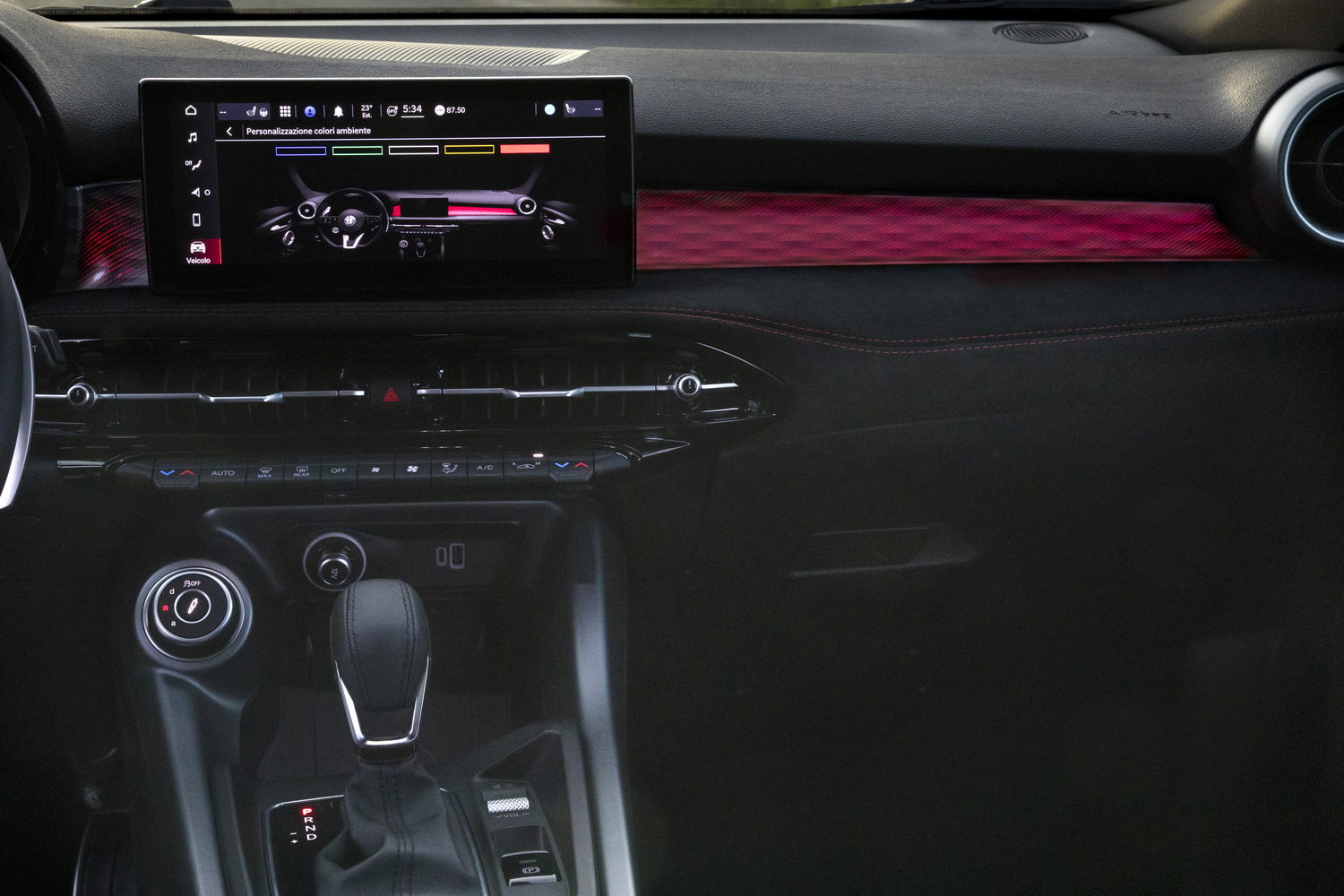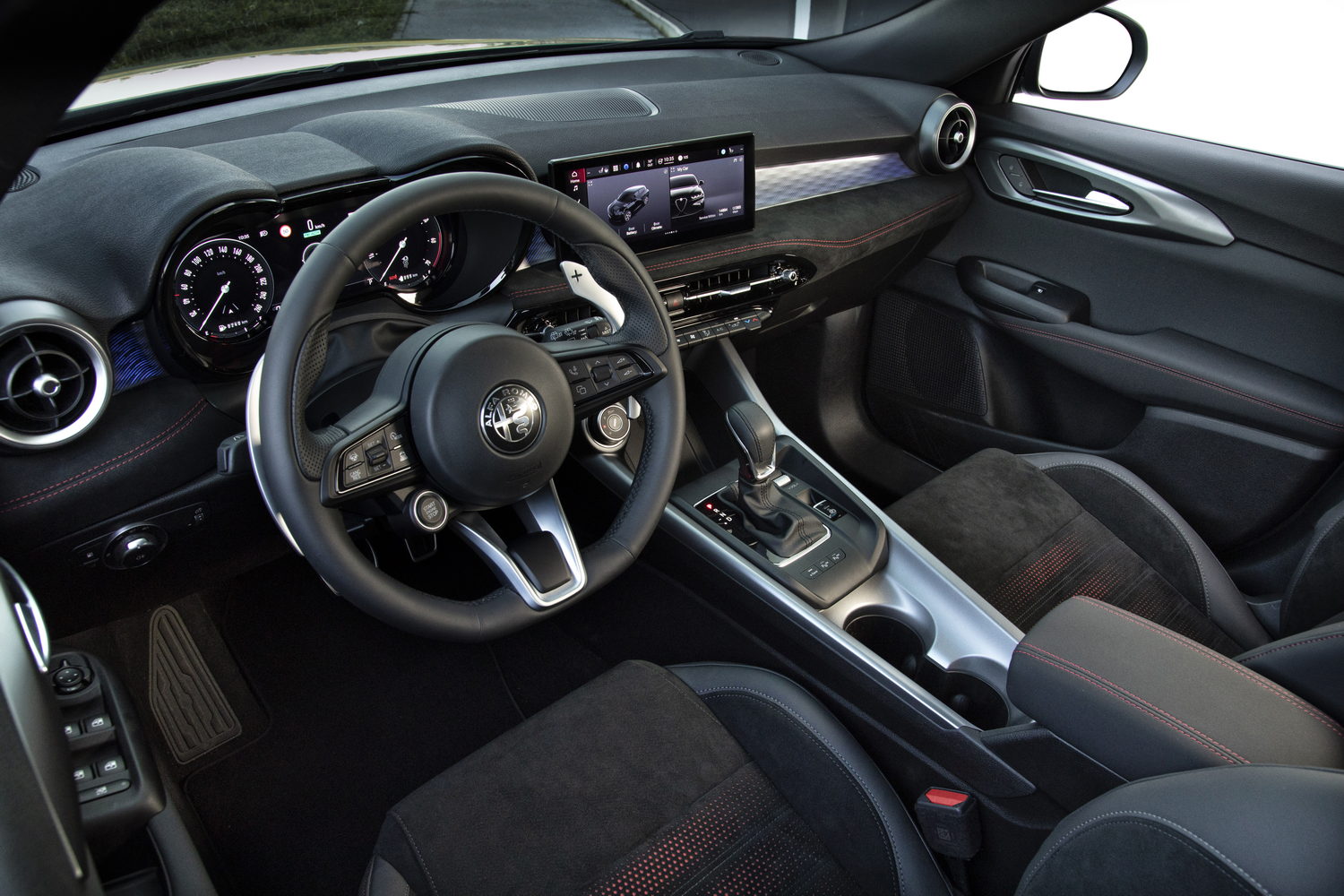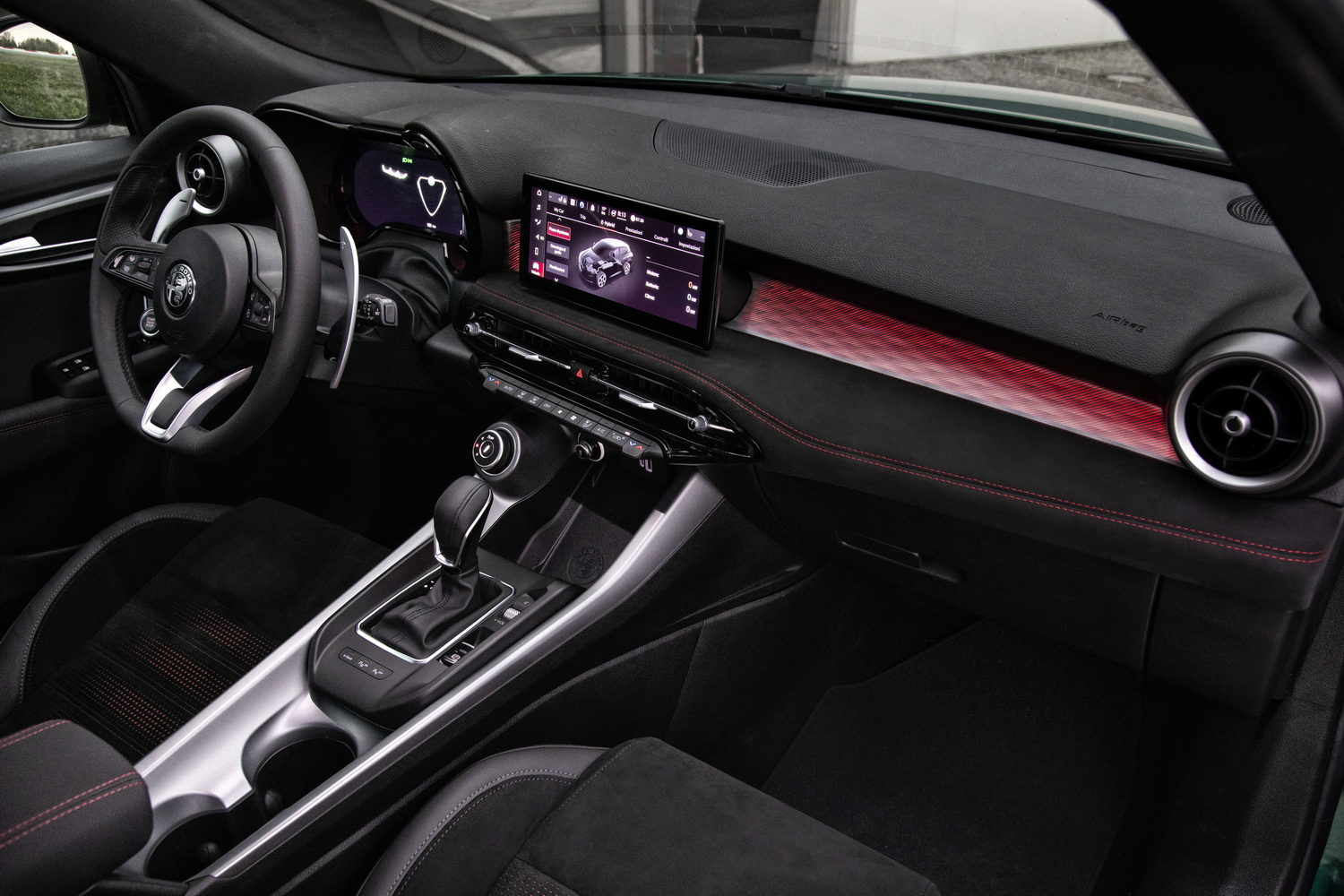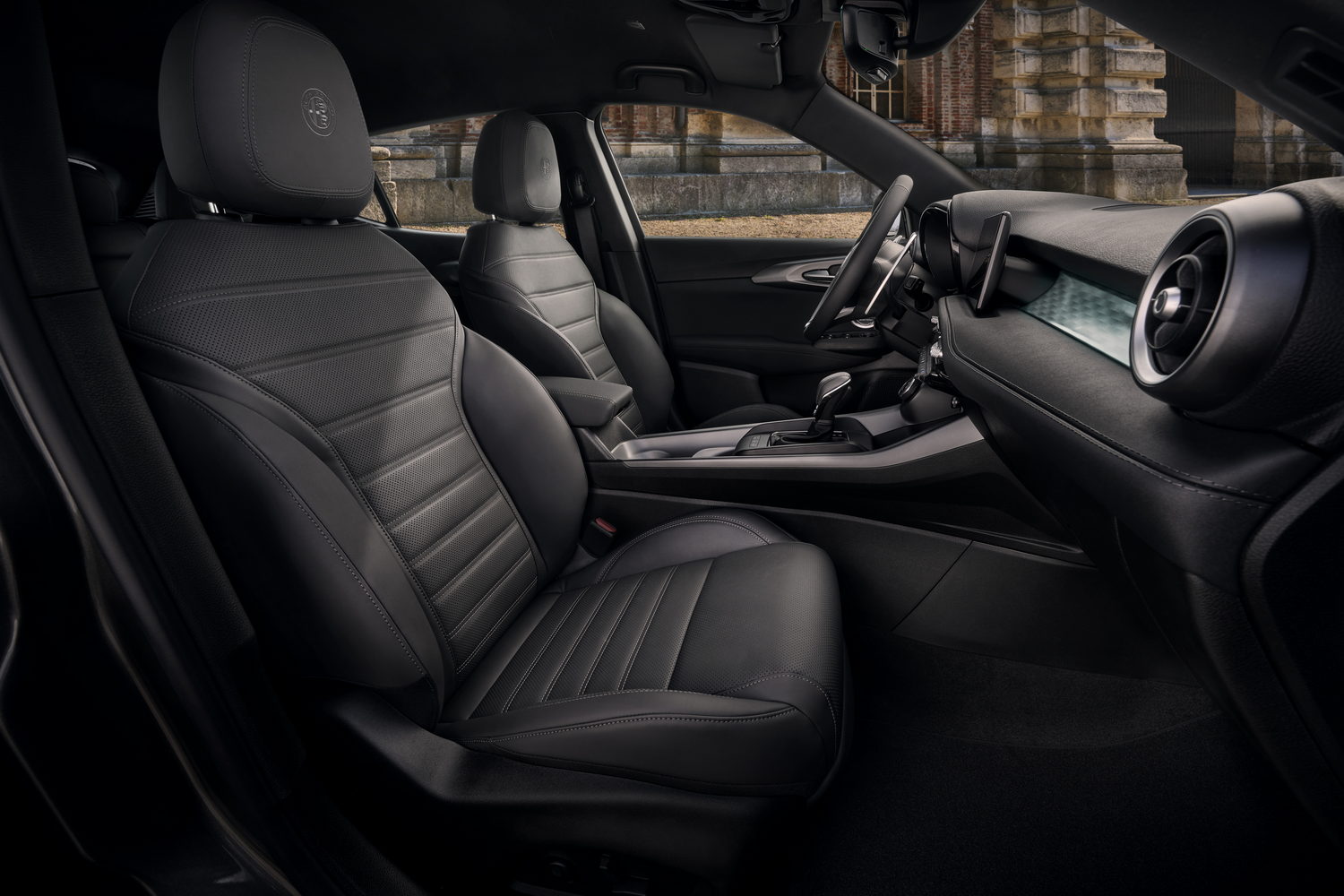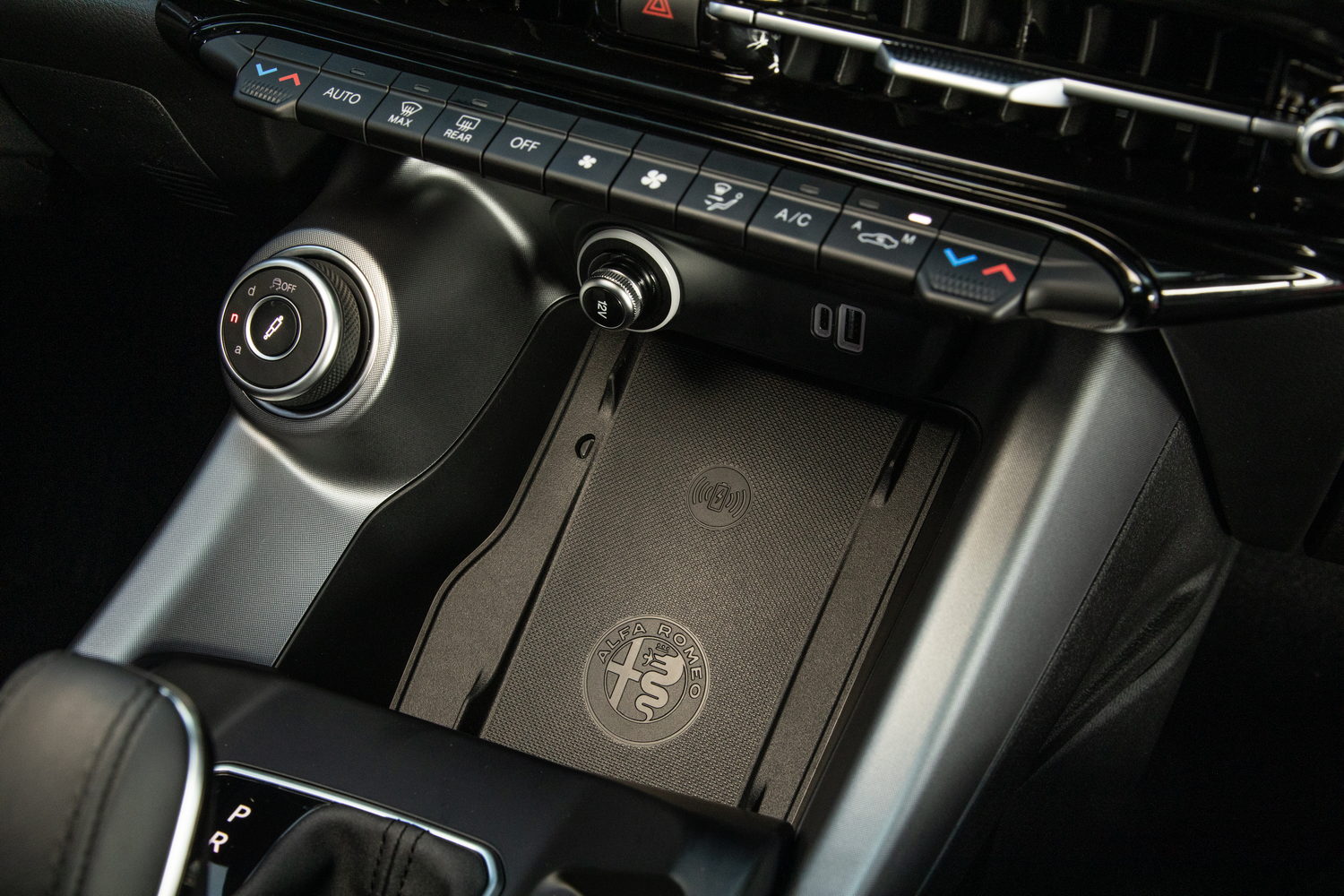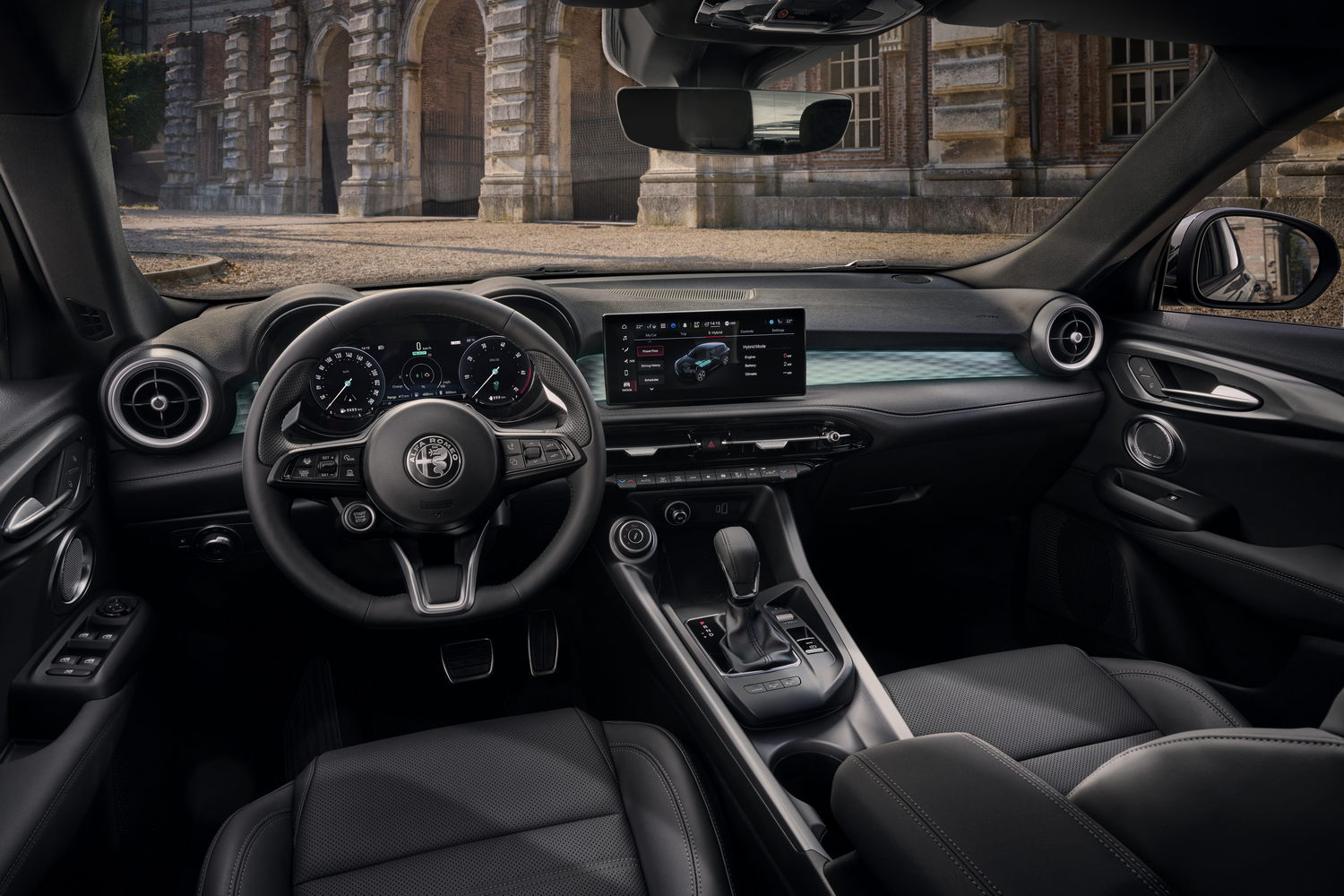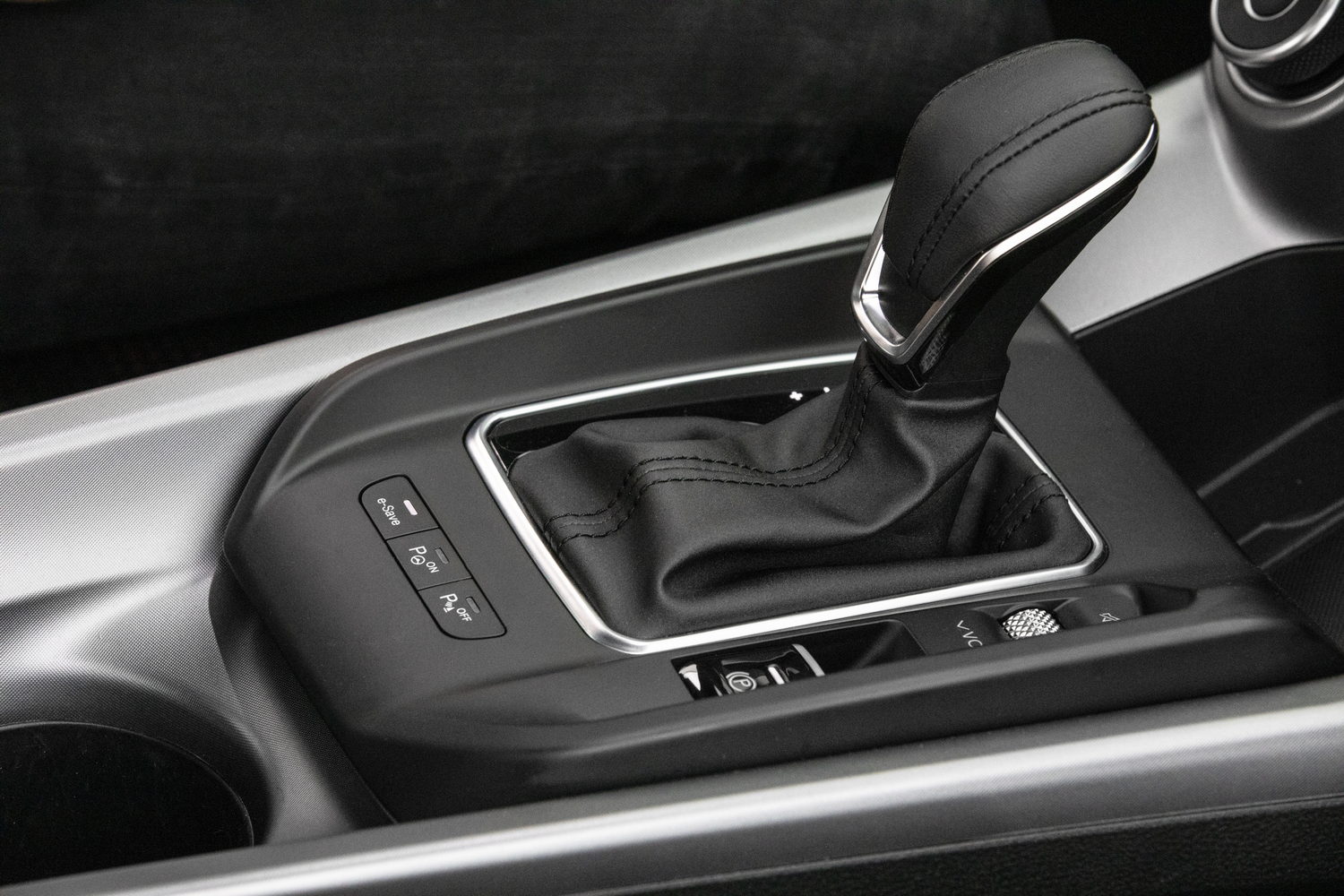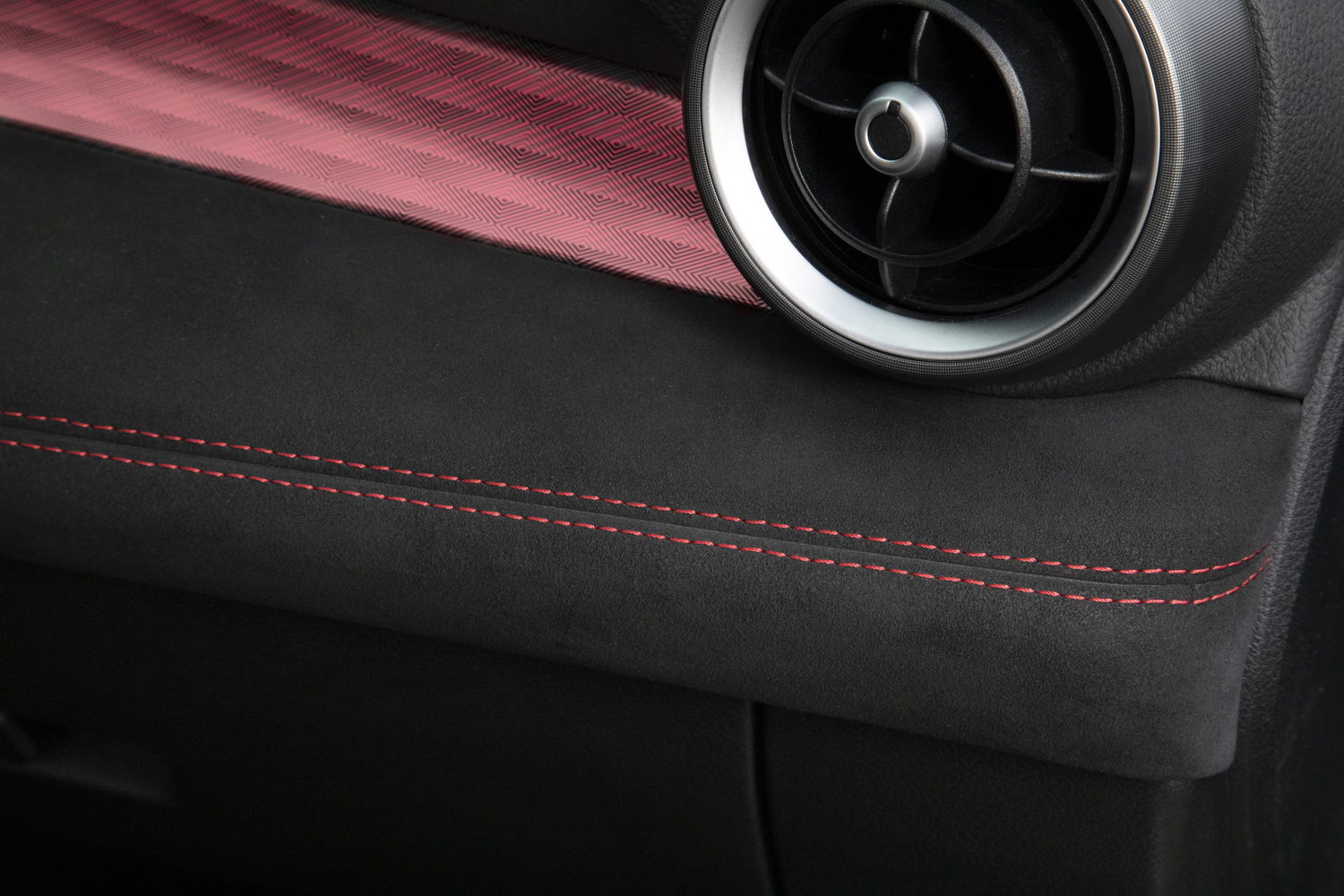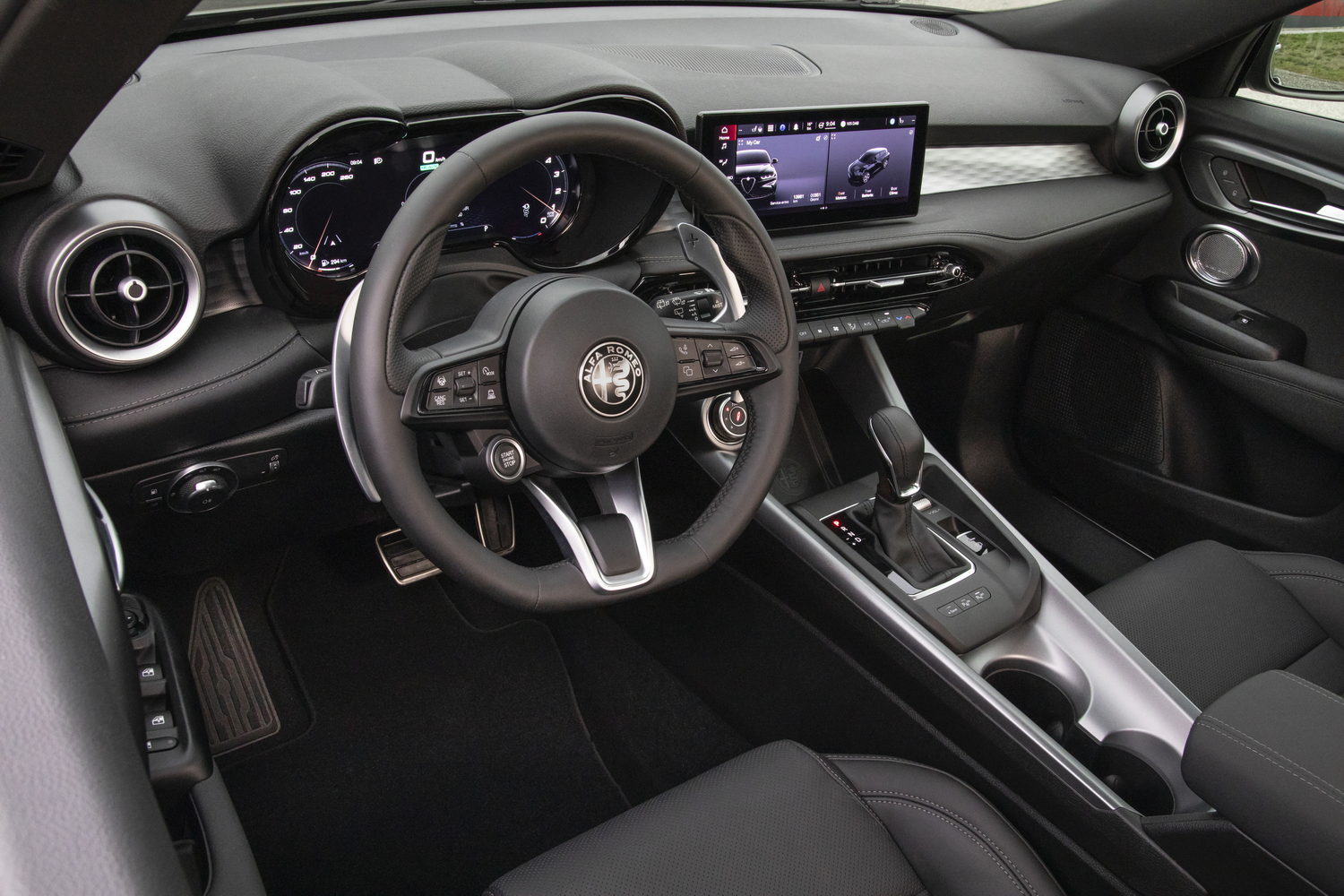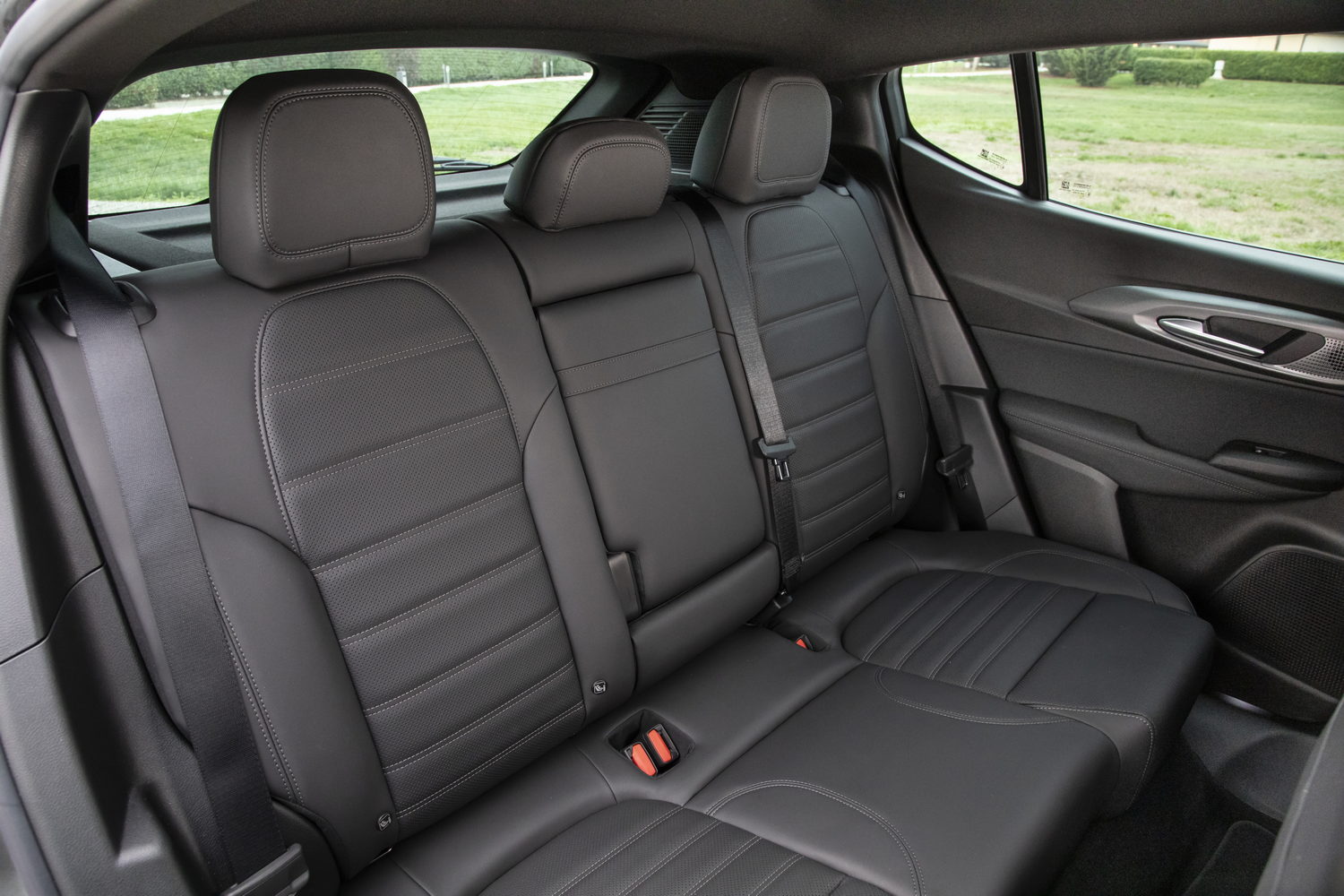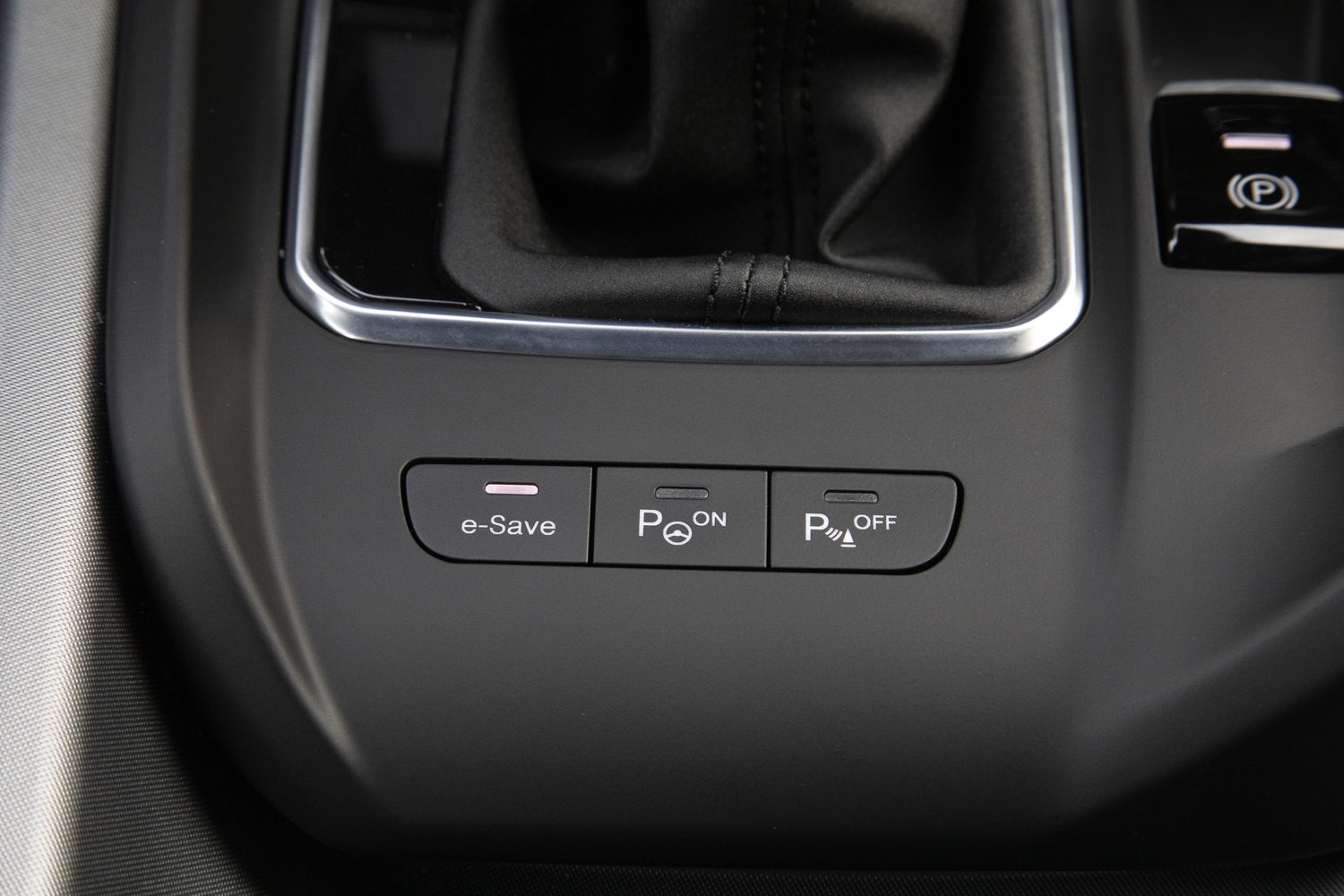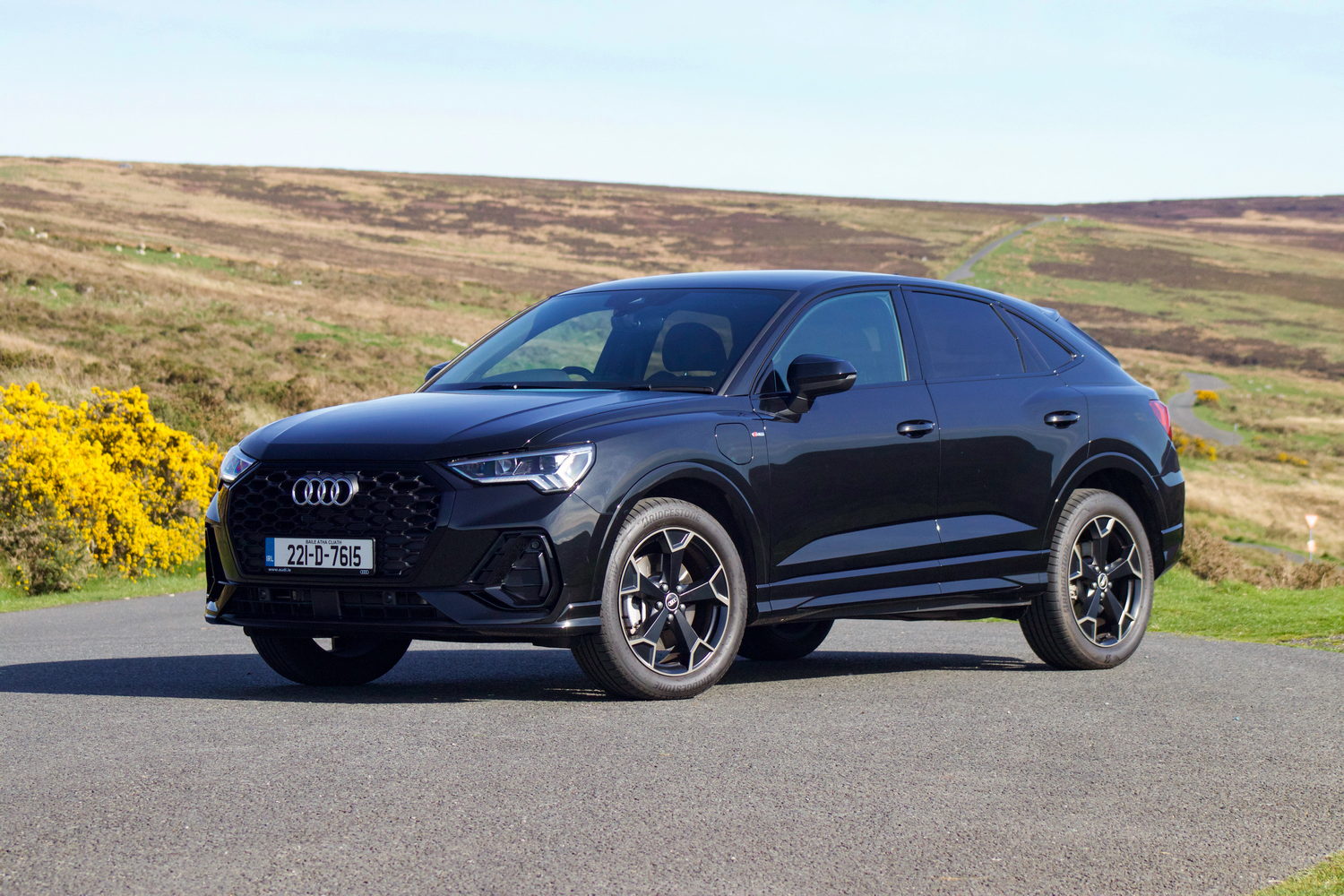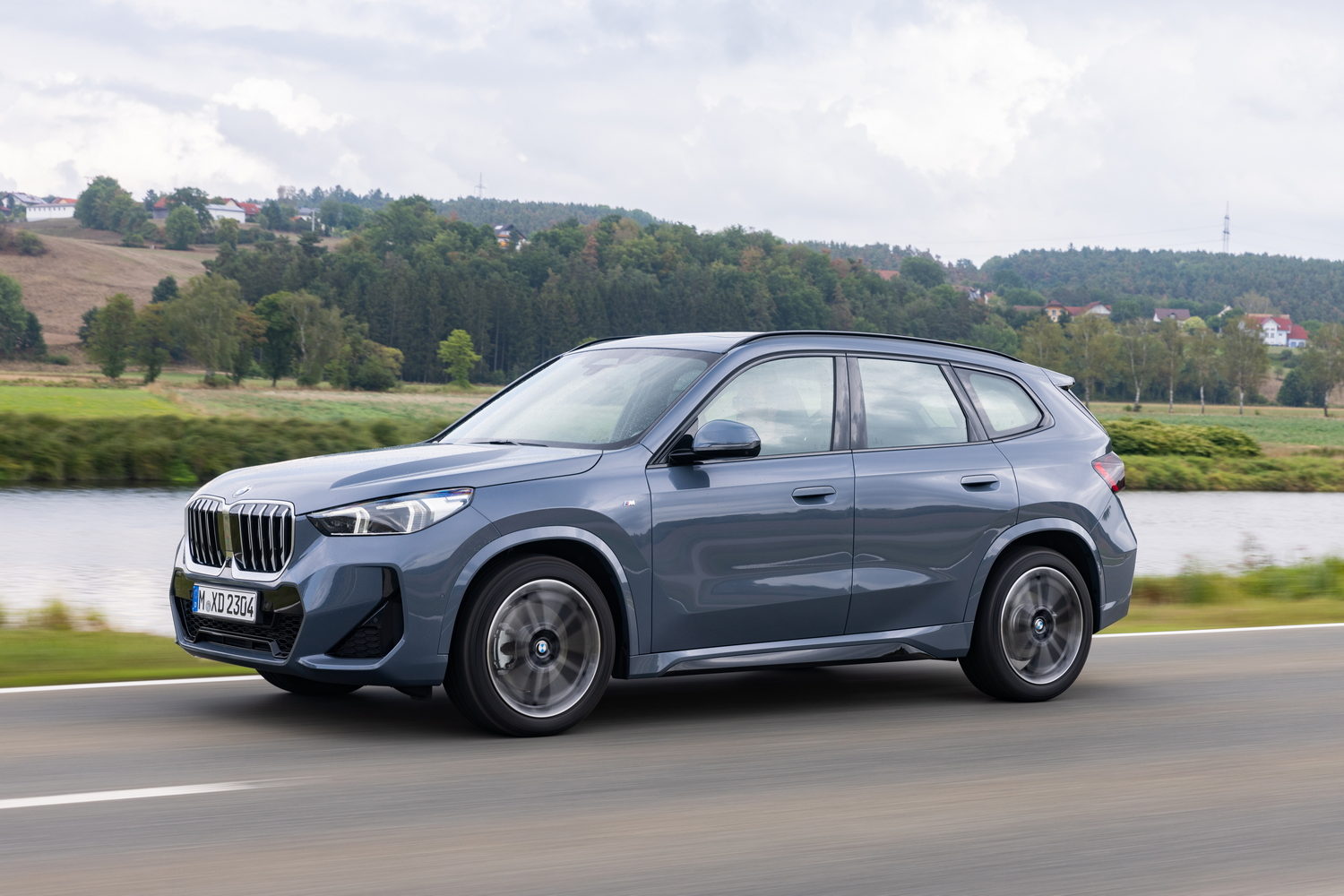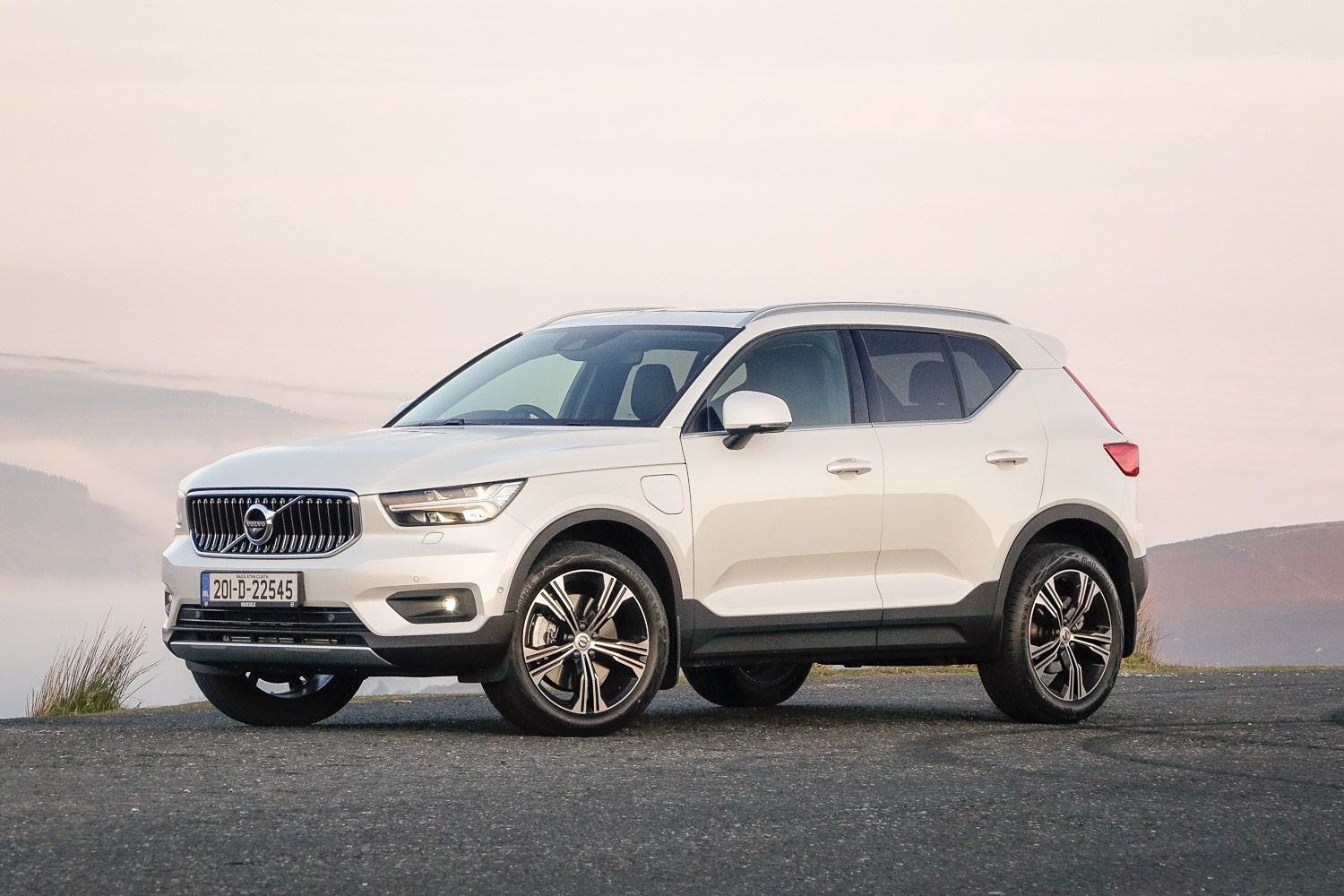When the Alfa Romeo Tonale was revealed, it came with a wave of optimism. This, the Italian manufacturer hoped, was the car that would change its fortunes. But then we first drove the Tonale in Hybrid form, we came away a little underwhelmed. A firm ride and below-par cabin let the side down somewhat, although impressive agility and striking design showed us the car was not without promise. And now we've tested the more powerful, more efficient plug-in hybrid model that's supposed to be even more of a rival for the BMW X1 and Volvo XC40. But can the PHEV Q4 really be that much better than the Tonale Hybrid?
In the metal
It isn't easy to tell the Tonale PHEV Q4 apart from the more conventional Alfa Romeo Tonale Hybrid, but if you look very closely, you'll spot two key differences between the cars. You will have to look very closely, though, because the first difference is the exhaust outlets, while the second is the addition of an extra filler flap on the flank. On one side of the car, you'll find the petrol filler cap, while the other side houses the socket for charging the battery. Working out which is which is made easier by another addition: a little logo on the rear window that denotes the side on which you find the charging point. The logo itself is a twist on the Biscione serpent found on Alfa's badge, with the head and tongue replaced by a plug icon.
Small visual tweaks aside, though, the Tonale PHEV Q4 looks much the same as its less powerful sibling, and that's no bad thing. One of the most appealing things about the Tonale - no matter which powertrain is under the bonnet - is the way the car looks, thanks in part to its narrow lights and the compact shield-shaped grille. Alfa Romeo is adamant that the Tonale is a premium product capable of mixing it with premium rivals, and it certainly looks the part alongside the BMW X1 and Volvo XC40.
And those two cars are this thing's closest rivals, however it may look in photographs. It does, admittedly, look larger in pictures, and it's easy to imagine this is a BMW X3 or Audi Q5 rival, but it's actually smaller, mixing it with the more compact Mercedes-Benz GLA, for example.
At least it does in terms of external dimensions. Inside, it's a slightly different story because space is only acceptable for the class. There's enough room to seat four adults in relative comfort, although taller passengers will find the rear seats a bit tight, but the boot space takes quite a hit as a result of the transition to plug-in hybrid power. Where the Tonale Hybrid has 500 litres of load space, the PHEV Q4 model only has 385 litres, making it barely more capacious than a Volkswagen Golf. Admittedly, lots of plug-in hybrid SUVs sacrifice some boot space in search of efficiency, but a hybrid XC40 still has more luggage room than the Alfa.
It also has a more premium cabin, because the interior quality is one of the Tonale's weak spots. While it looks good from a distance, there are some substandard plastics kicking about, particularly below knee level, and there are a few hanging around some regular touchpoints, which is a shame.
For the first time in a long time, though, an Alfa actually has technology that's vaguely on a par with that of BMW and Mercedes-Benz. The big touchscreen is standard, and though it has its faults - namely sluggish response at times and an old-school navigation system - it is clearer and more modern than the systems found in other recent Alfa models. It isn't the greatest system on the planet, but this is a step forward for a brand that has traditionally been weak on the tech front.
That said, Alfa Romeo has applied plenty of tech features to both the Tonale Hybrid and the PHEV Q4. Both cars come with a non-fungible token (NFT) service record, which keeps track of vehicle maintenance, while the plug-in hybrid's system will also record how much time it has spent running on electricity alone.
And that's before we get on to the standard Apple CarPlay and Android Auto technology that's rendered something of a must-have by the clunky navigation system, and the digital instrument cluster that's had a little bit of a refresh with the arrival of the new powertrain. It still has the same advantages, with its sharp display and ample information, but it has the same cons, too. It's still a bit fussy, and Alfa has made it more so with the addition of that snake/plug logo again. It does change colour when the battery is charging or powering the wheels, though, so you have more idea of what the powertrain is doing.
Driving it
The Tonale Hybrid showed a little promise when we drove it earlier this year, but the Italian SUV came with a few niggling issues. Not least of these was its powertrain, which combined a 1.5-litre petrol engine with an electric motor and a small battery to provide a little electric propulsion at low speeds and for short periods. That wasn't too bad, but the seven-speed automatic gearbox really held it back and made it less than pleasant to drive.
With the Tonale PHEV Q4, though, the difference is stark. The engine is a smaller 1.3-litre petrol unit that drives the front wheels, but it's backed up by a more powerful 90kW electric motor on the rear axle and a much larger 15.5kWh rechargeable battery. That gives the Tonale all-wheel drive and a total power output of 280hp, which is enough for a remarkably sprightly 0-100km/h time of just over six seconds.
More importantly, it's much smoother than the standard Hybrid, and although the motor makes a few odd noises at times, the petrol engine is unobtrusive even when you put your foot down. Were it not for the digital instrument display changing colour, it wouldn't always be easy to work out whether the petrol engine is running or not. Even better, there's very little to say about the six-speed automatic gearbox in the Tonale PHEV, which makes a change from the Hybrid. Yes, it can be a bit slow when you're using the shift paddles to change gear manually, but that's picking holes. It's a cut above the seven-speed auto in the Hybrid for sure.
For many buyers, though, the PHEV Q4 will be on their radar not for its refinement or performance, but for its efficiency. That battery gives the car an all-electric range of up to 69km on the official economy test, and our test drive suggested around 60km could be achieved without too much trouble. That means those who charge often and keep most of their journeys below the 60km mark will get close to the official fuel consumption figure of 1.1-1.4 litres per 100km. That said, those who regularly do longer drives or use the 280hp power output might find the Tonale less economical.
And using that power output is more tempting than you might imagine. Although the Tonale feels a bit sluggish in its default 'Natural' mode, switching the DNA drive mode selector into its Dynamic setting seems to wake the car up a bit. That unlocks the full potential of the engine and motor, offering levels of performance better suited to a hot hatchback than a family SUV.
And the Tonale has the handling to match. Like the standard version, the PHEV Q4 has very light steering that feels a little bit numb, but it turns into corners very keenly and the whole car feels light on its feet. Of course, it isn't especially lightweight - at 1.8 tonnes it's about 300kg heavier than the Hybrid - but it feels just as nimble, and although there is naturally some lean in corners, it's quite well controlled. On the track at Alfa Romeo's Balocco proving ground, it was remarkably good fun.
But on the roads around northern Italy, it lost some of its charm. Yes, it's very enjoyable on a good mountain road, but the trade-off is the same slightly unsettled ride that blights the Hybrid. It isn't too jarring or stiff, but there's a sort of bubbly, nuggetty feel to the ride even on smooth surfaces such as motorways. It isn't the end of the world, but it's annoying and it reduces confidence in what is otherwise a great car to drive. Interestingly, it was perfectly smooth on the track, which suggests the Tonale has been set up more for handling on circuits and good roads than for smoothness on scarred asphalt.
Despite that, the plug-in hybrid is the only Tonale with all-wheel drive, giving it a little bit of extra capability on mud, snow and any other surface with minimal traction. It is certainly designed to be used on the road, rather than off it, but the extra traction does make it more useful than the Tonale Hybrid, particularly if you fit tyres suited to the surface.
What you get for your money
Alfa Romeo Ireland has not yet announced prices for the new Tonale PHEV Q4, so we'll update this page when we know more. We do, however, have reason to believe that the plug-in Tonale will have the same trim levels as the Hybrid, with the basic Ti model joined by the more upmarket Veloce. As with the Hybrid, the Ti versions will come with glossy black exterior trim, part-leather upholstery and wireless phone charging, as well as the standard touchscreen infotainment system. Veloce versions, meanwhile, will likely add larger wheels, privacy glass and red brake callipers.
Summary
Although the plug-in Tonale does not right all the wrongs of its more conventionally powered sibling, it's a vast improvement. Admittedly, the interior isn't perfect in places and the ride isn't quite right either, but it's now powerful, refined and agile enough to compete with the BMW X1 and Mercedes GLA, while still differentiating itself with striking design.

